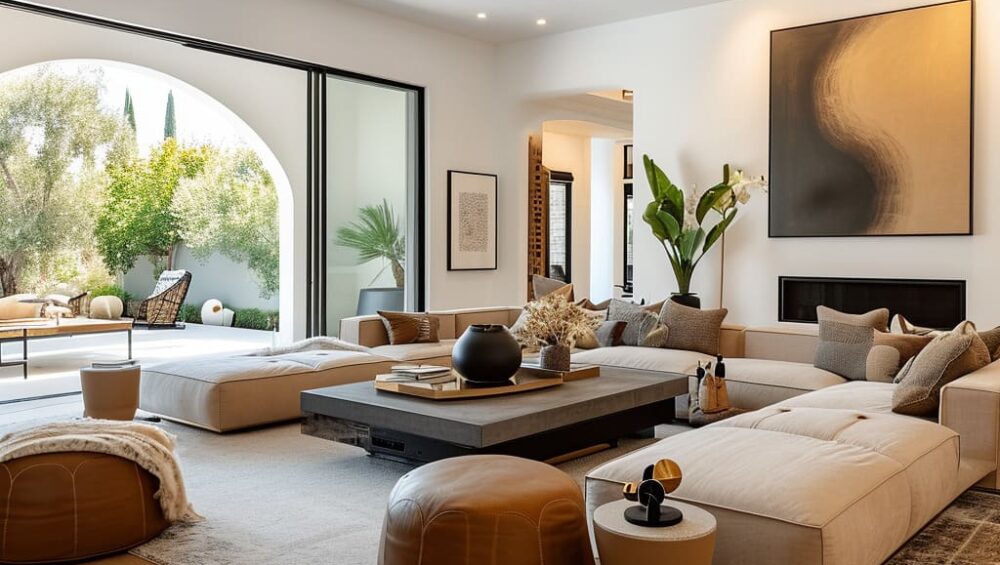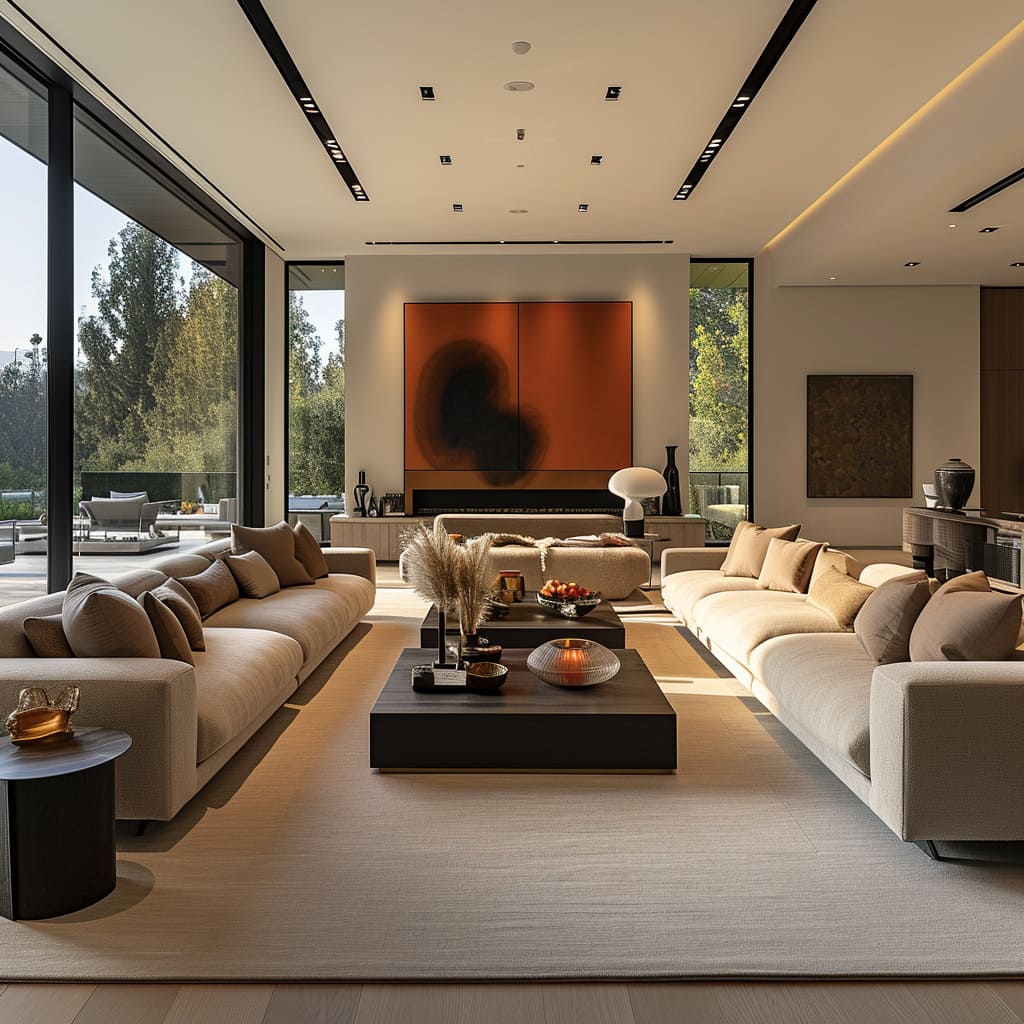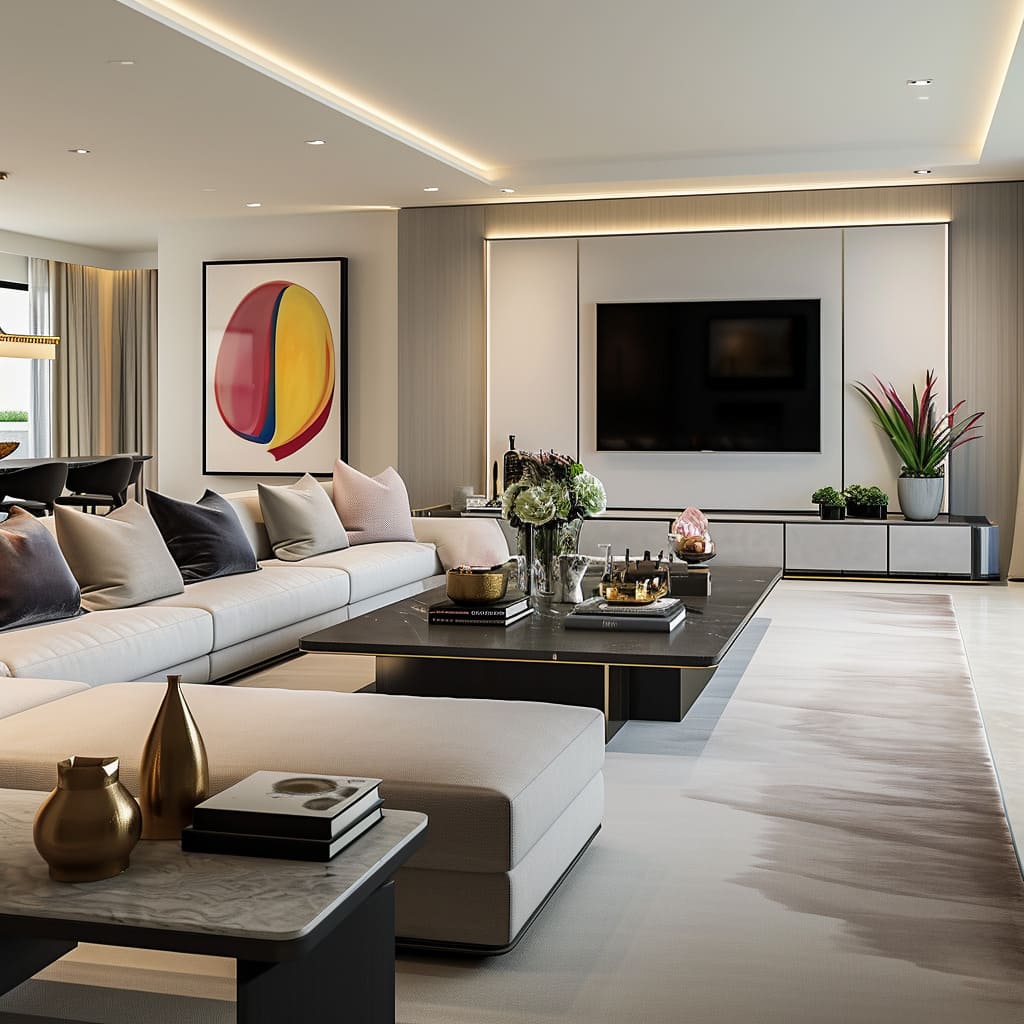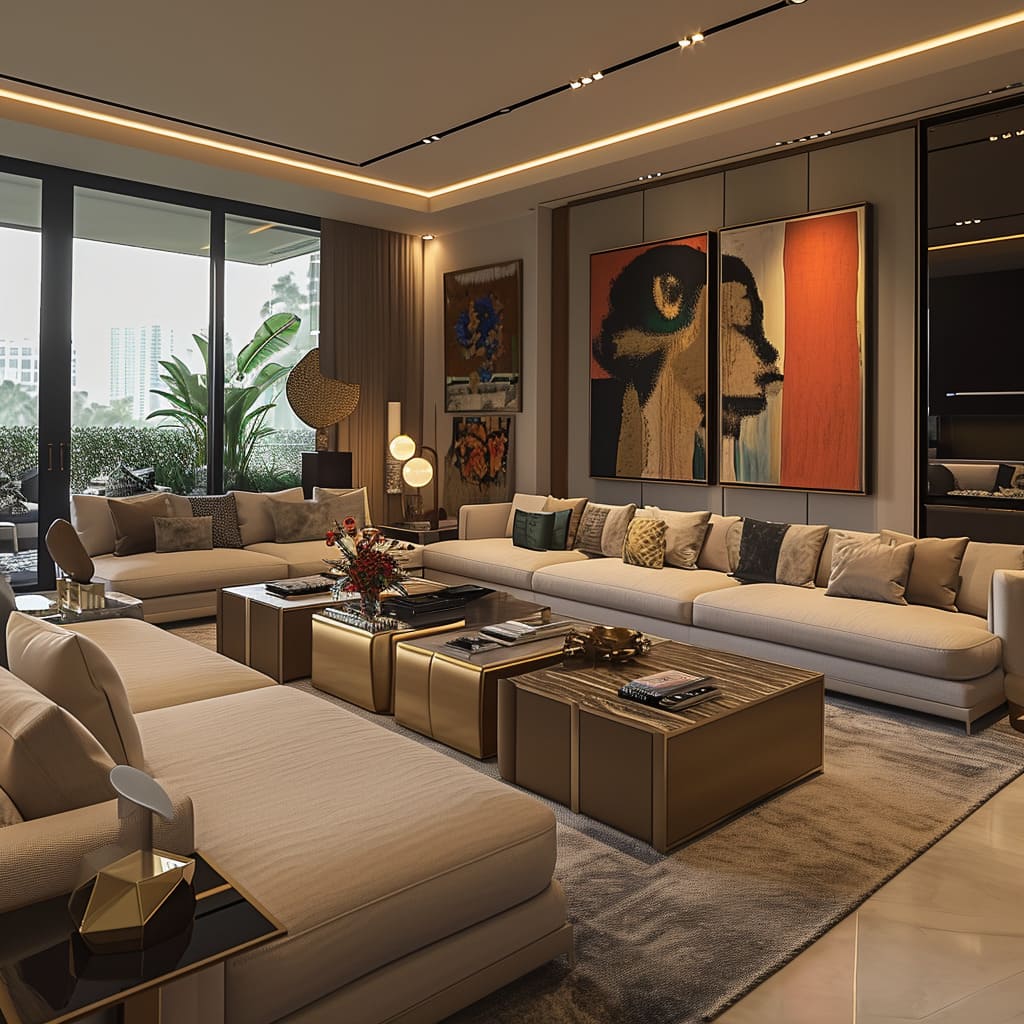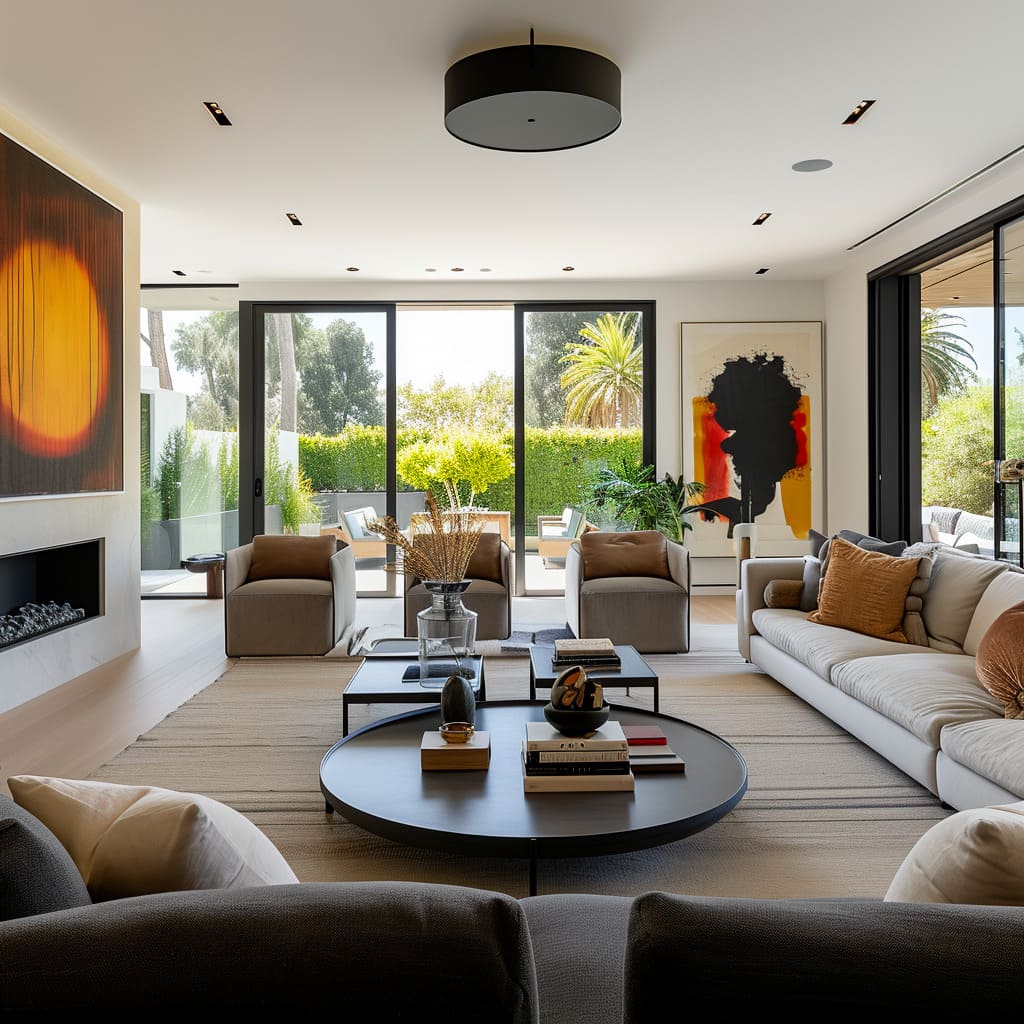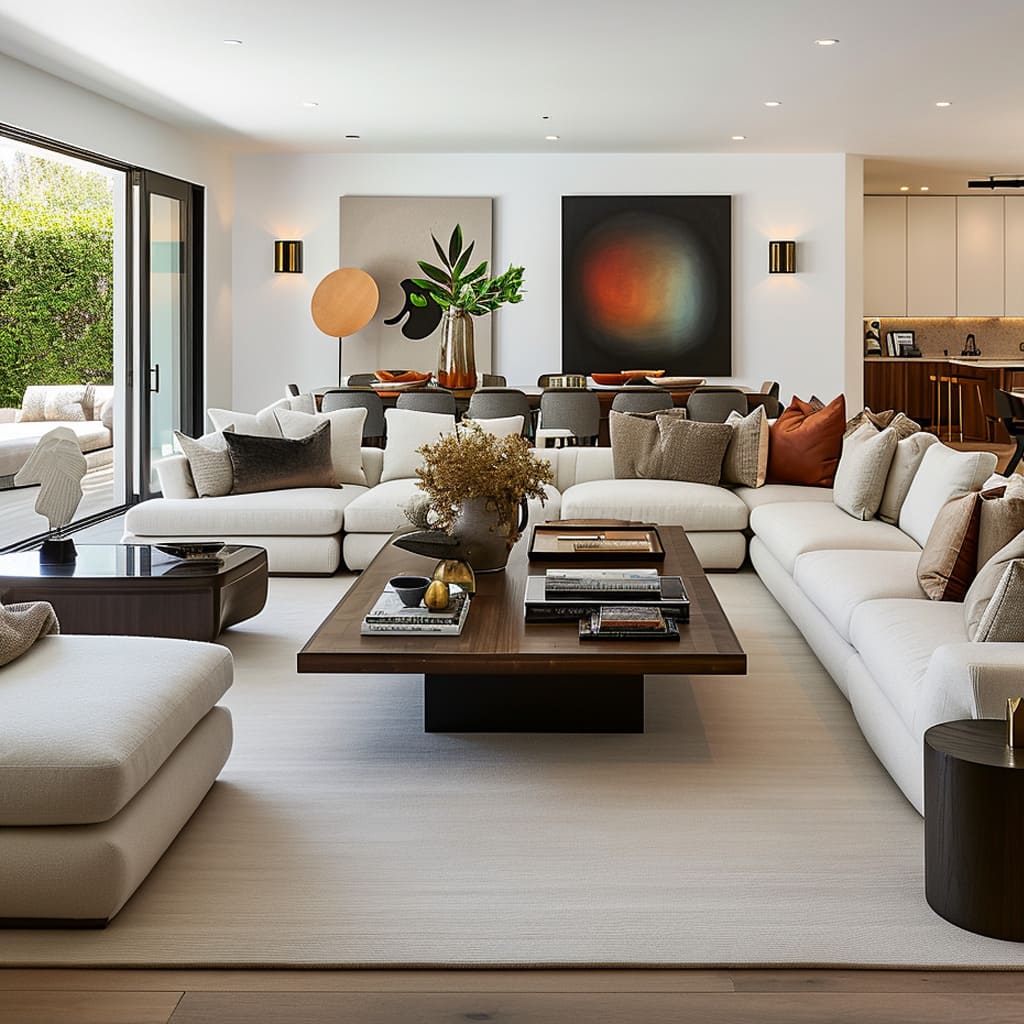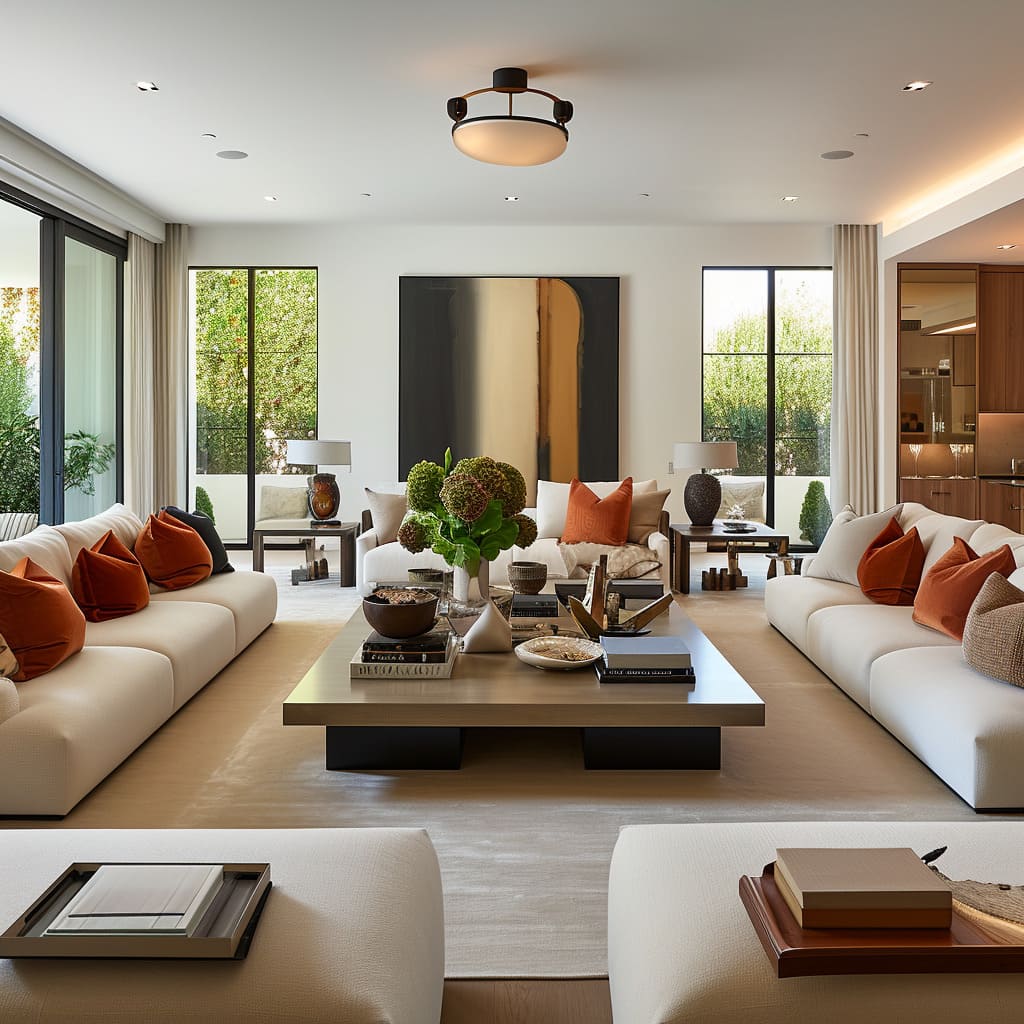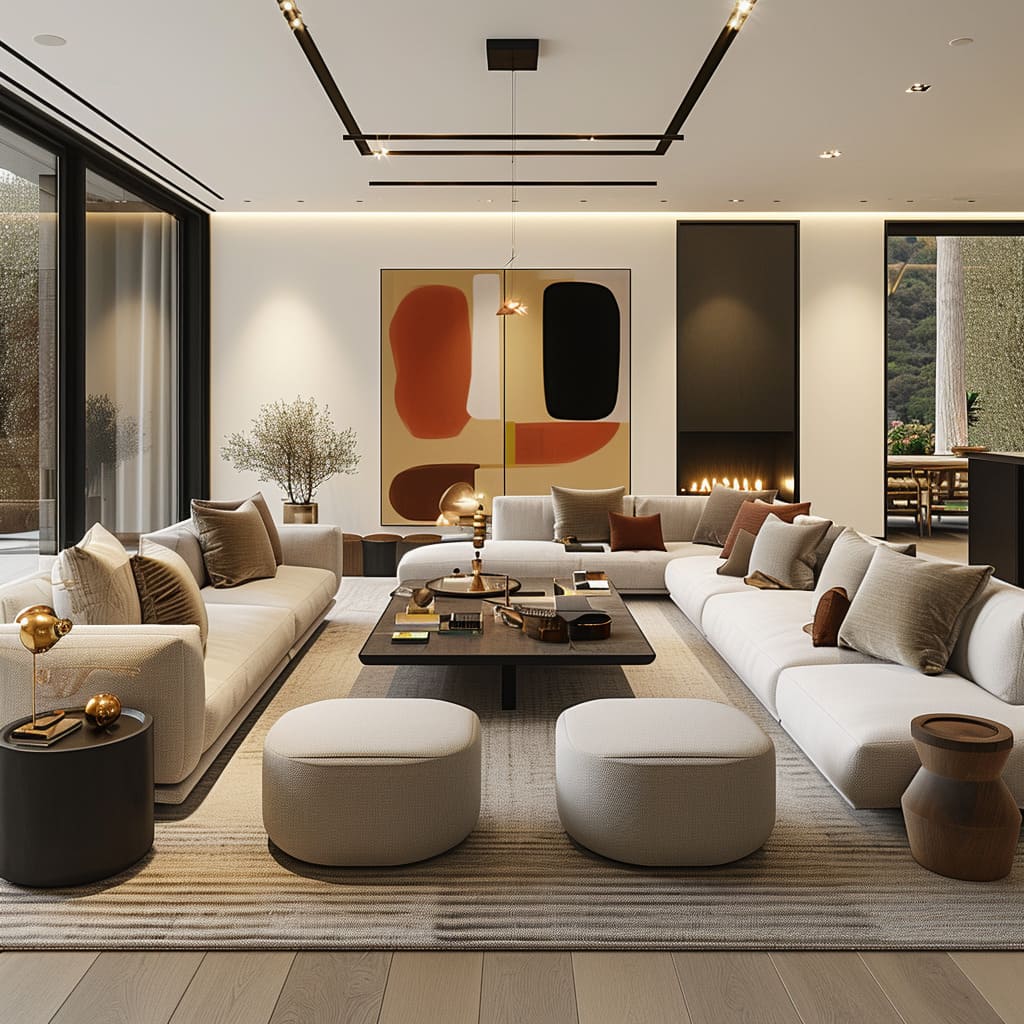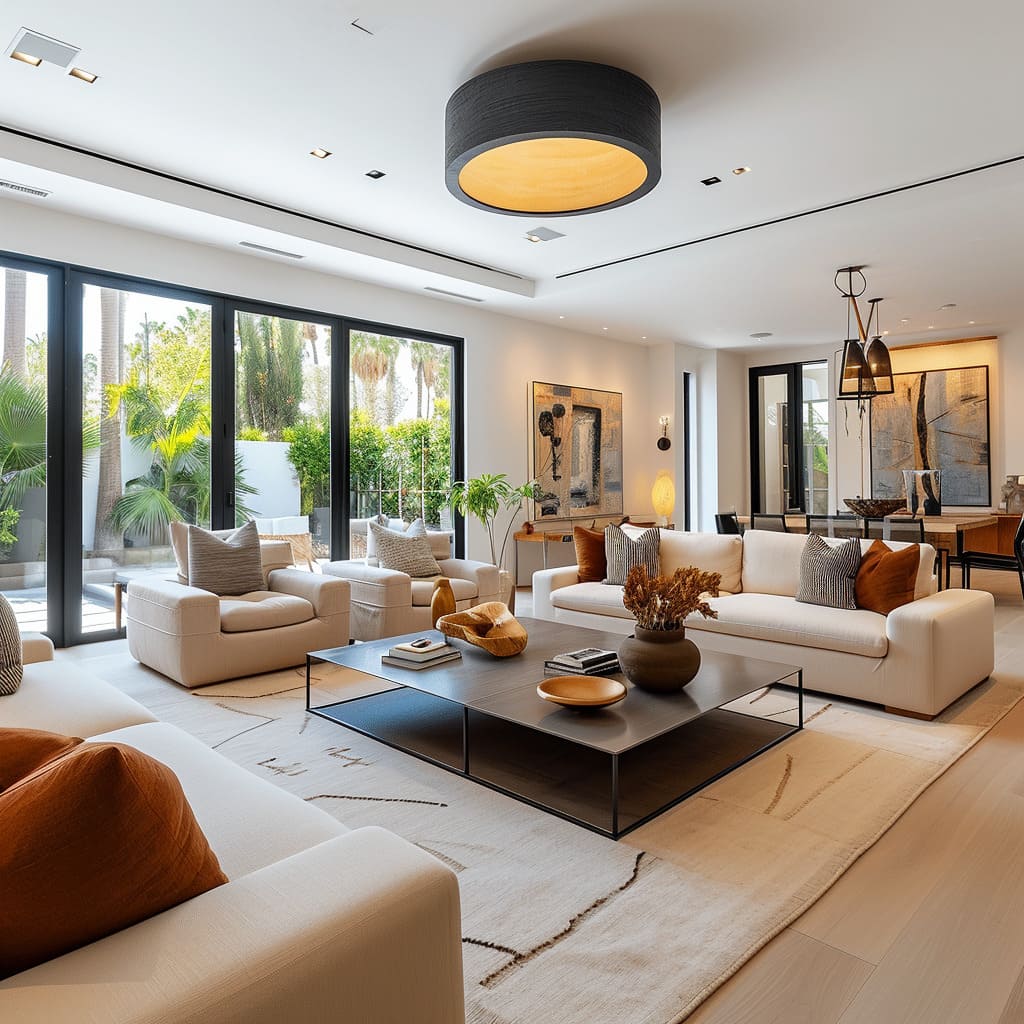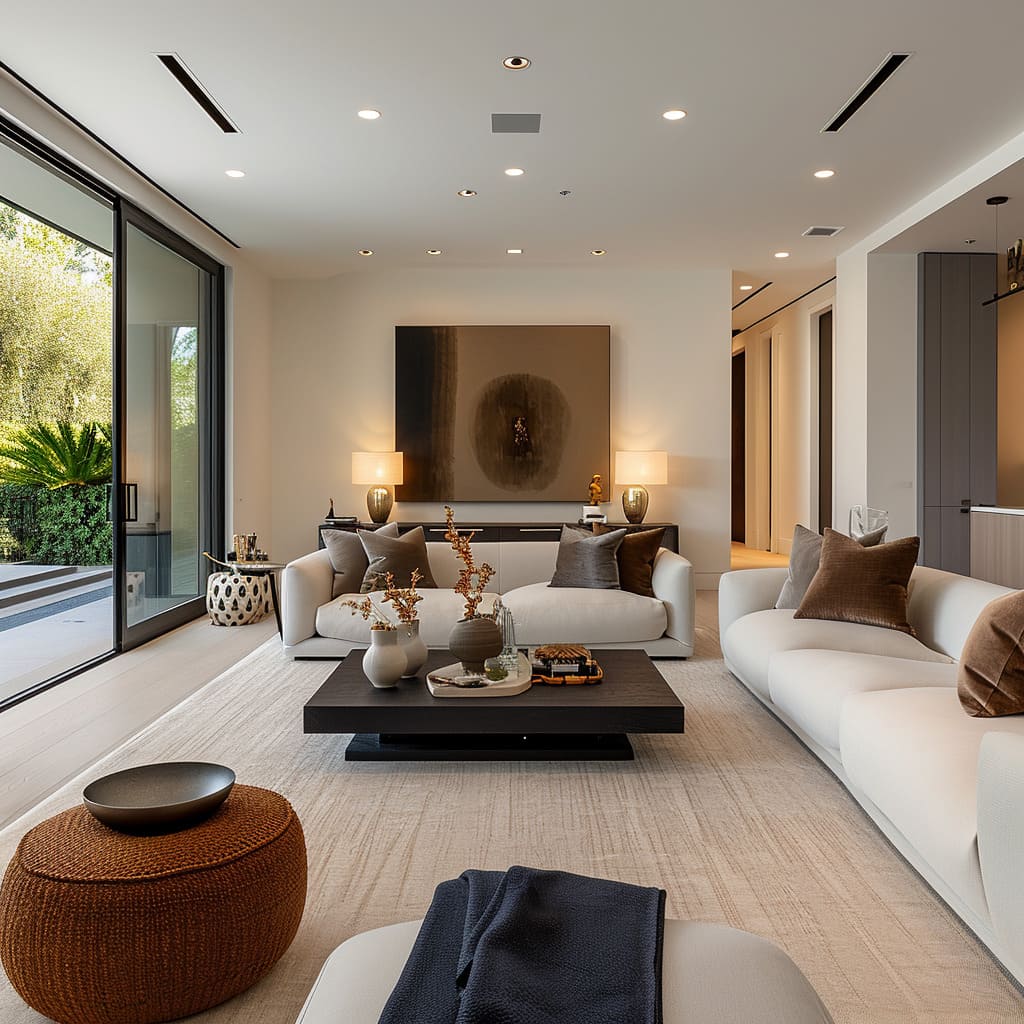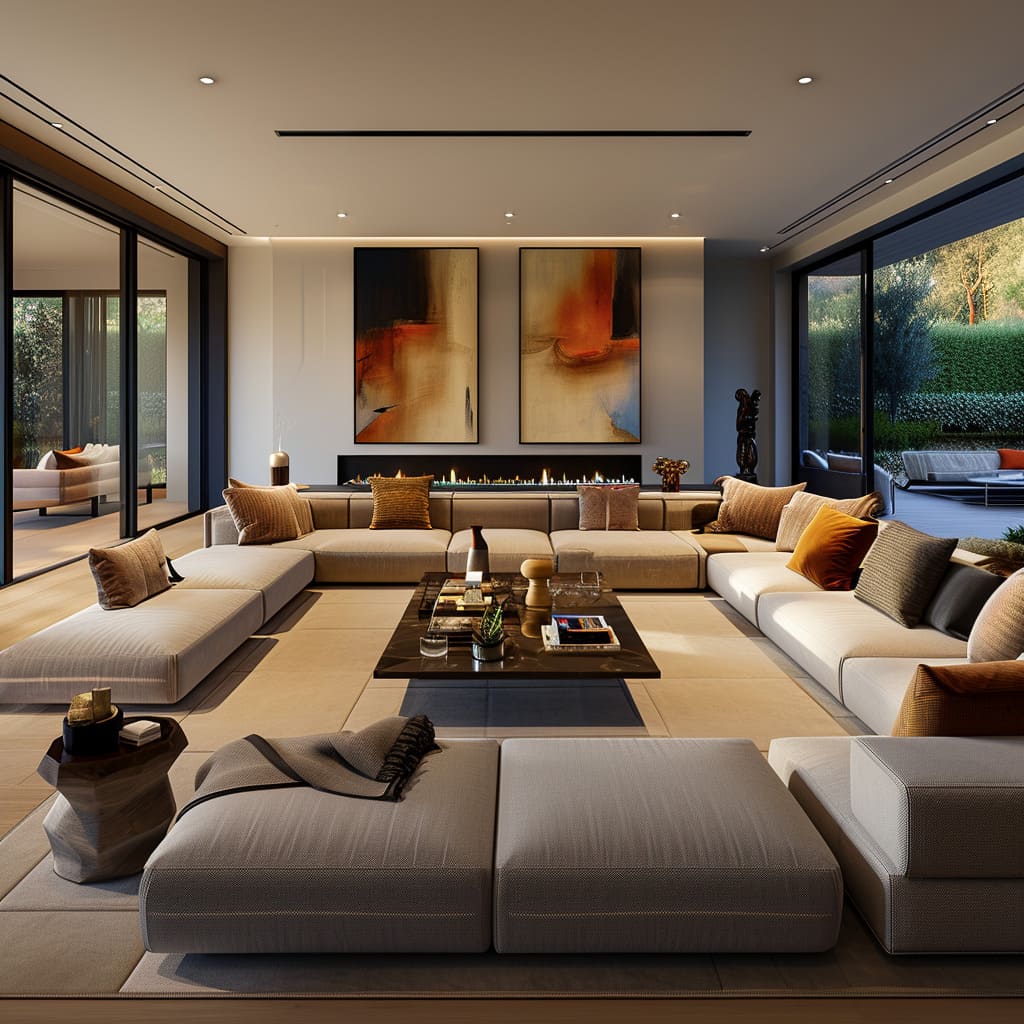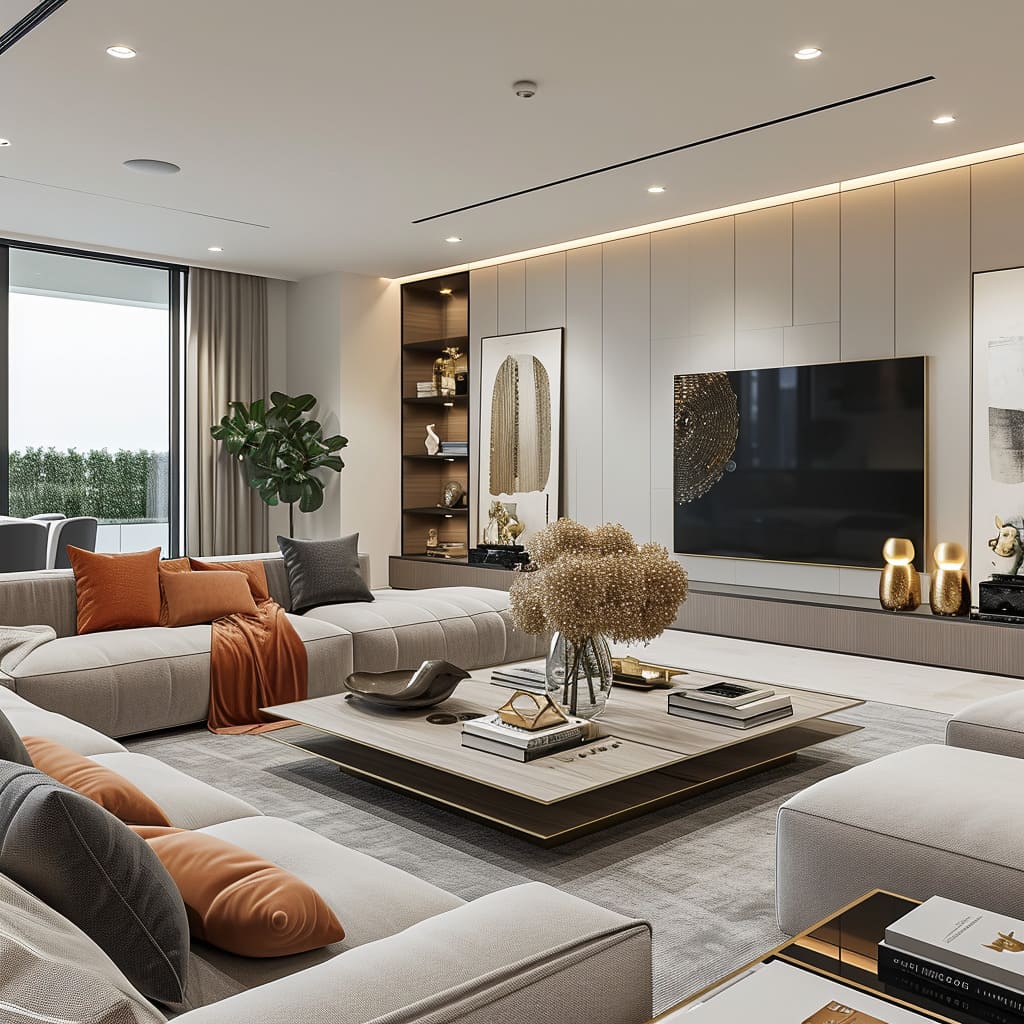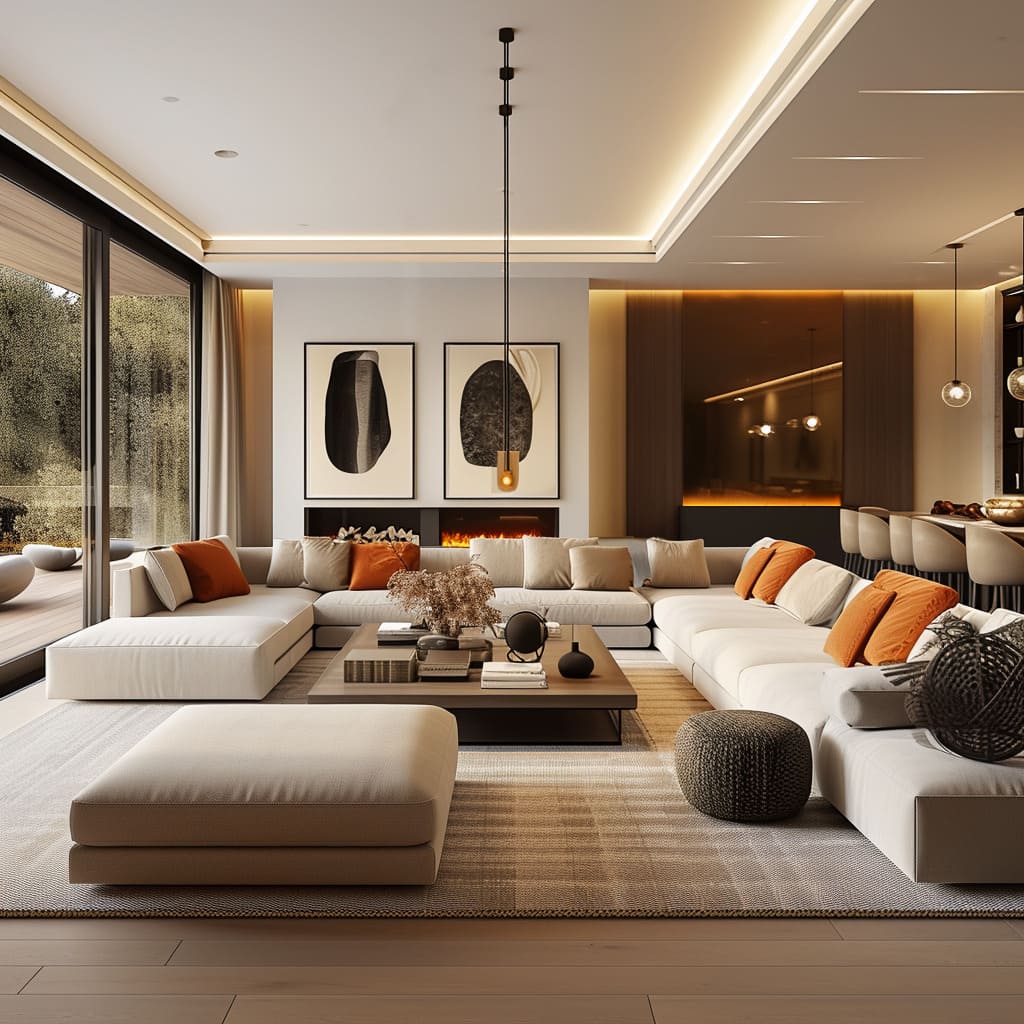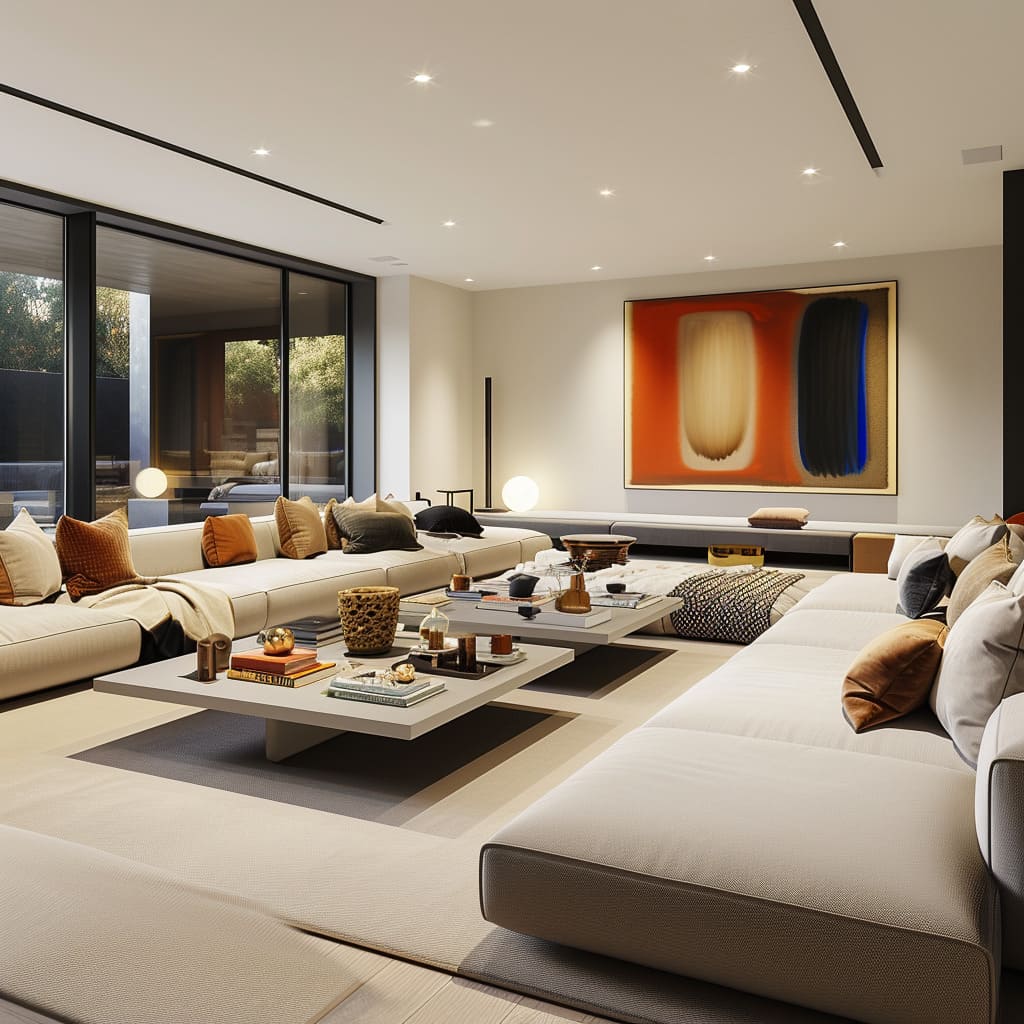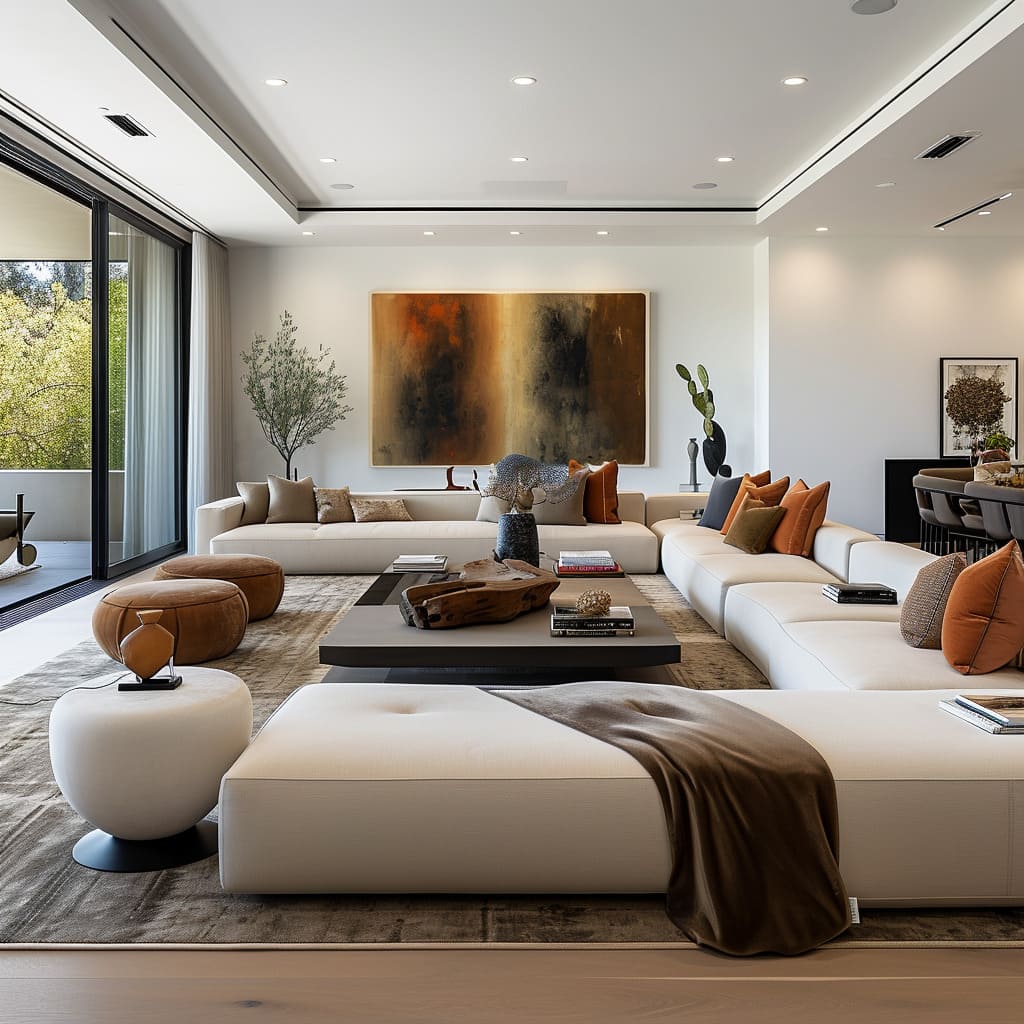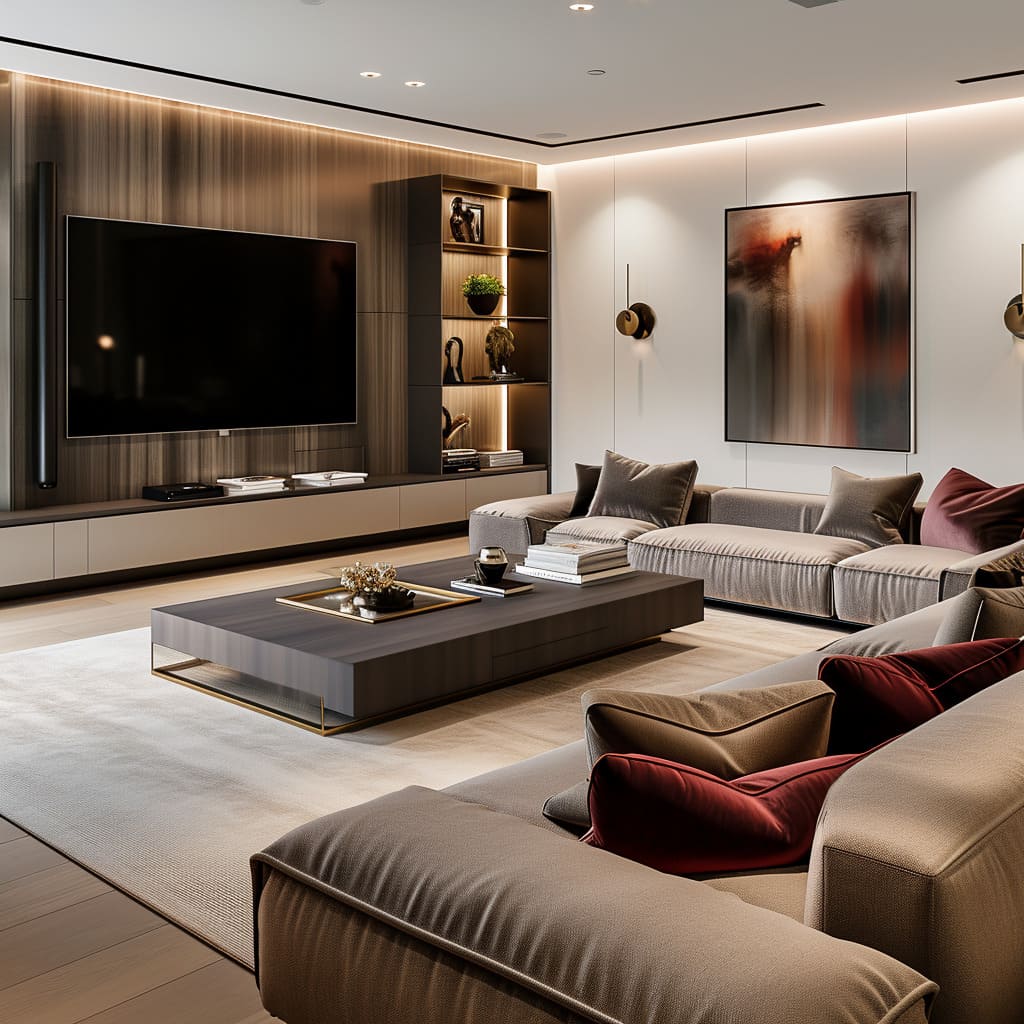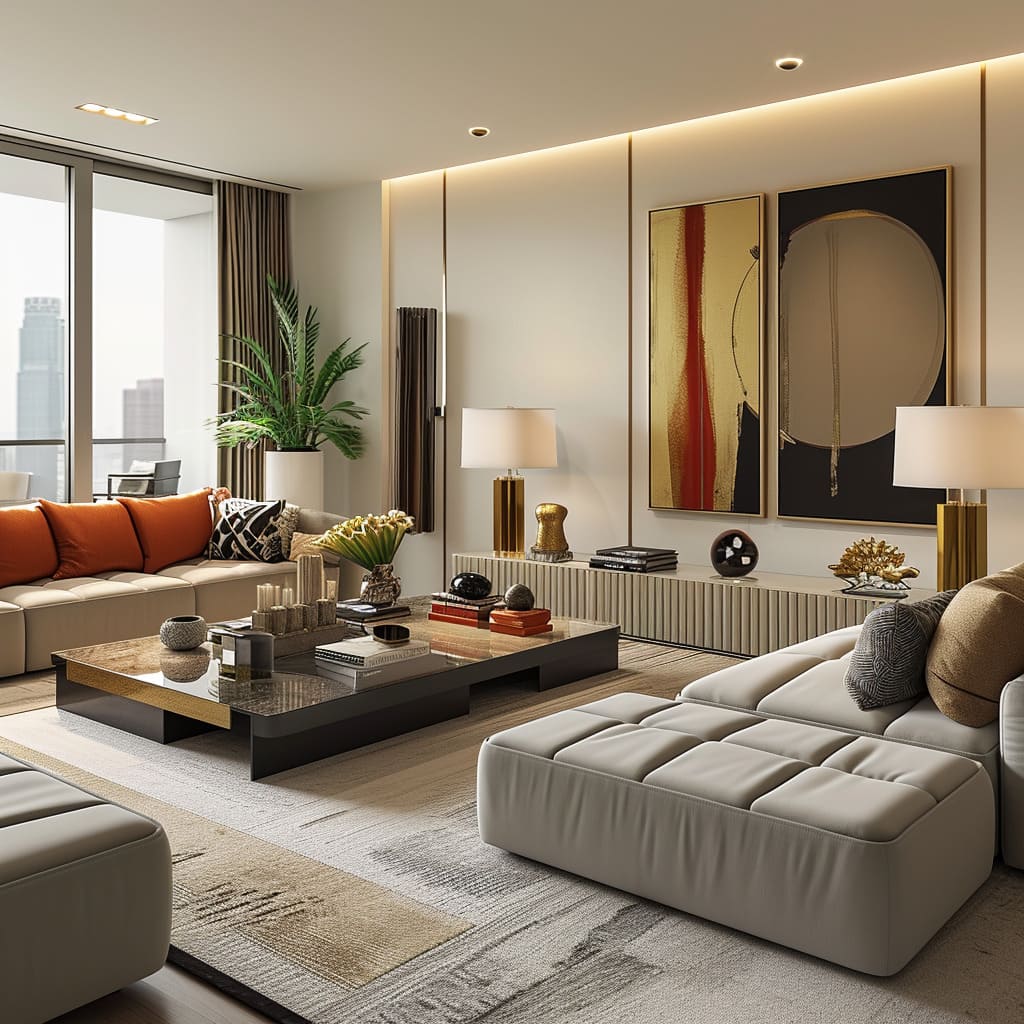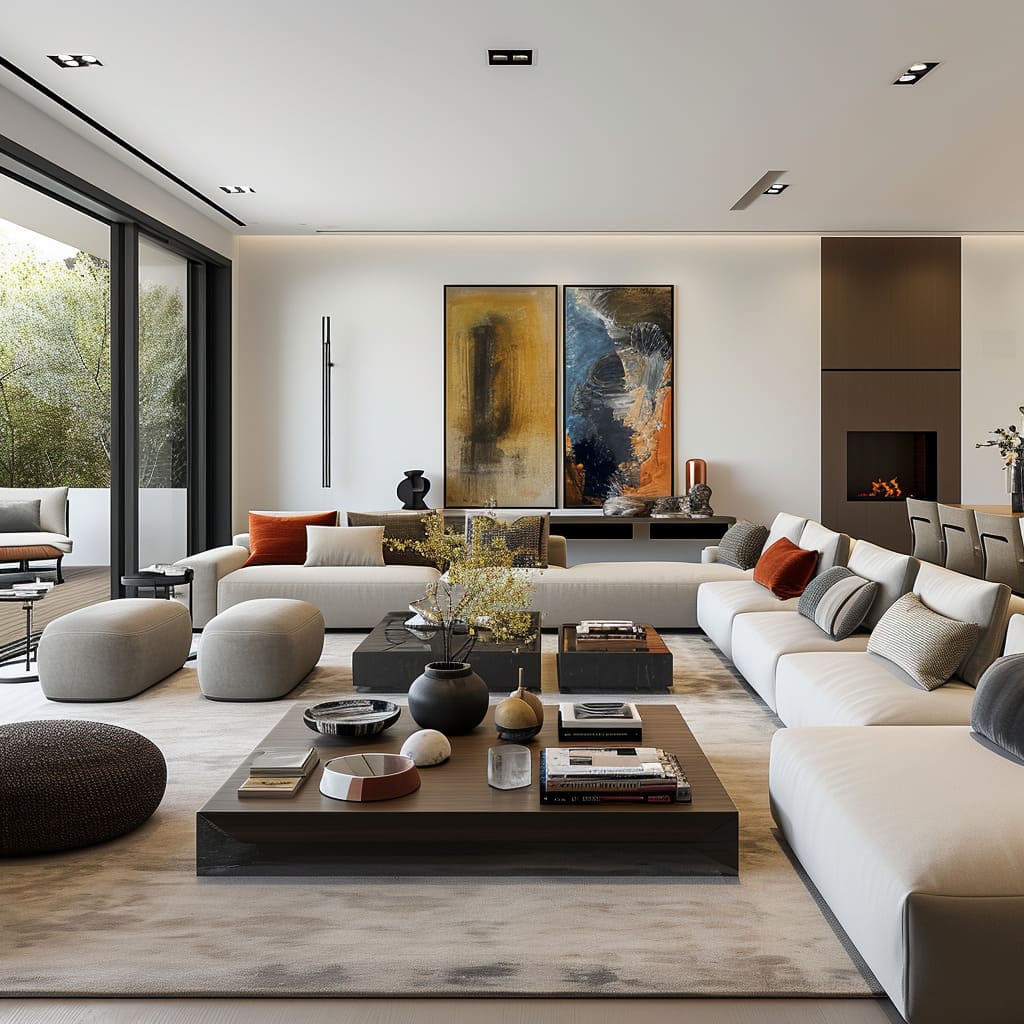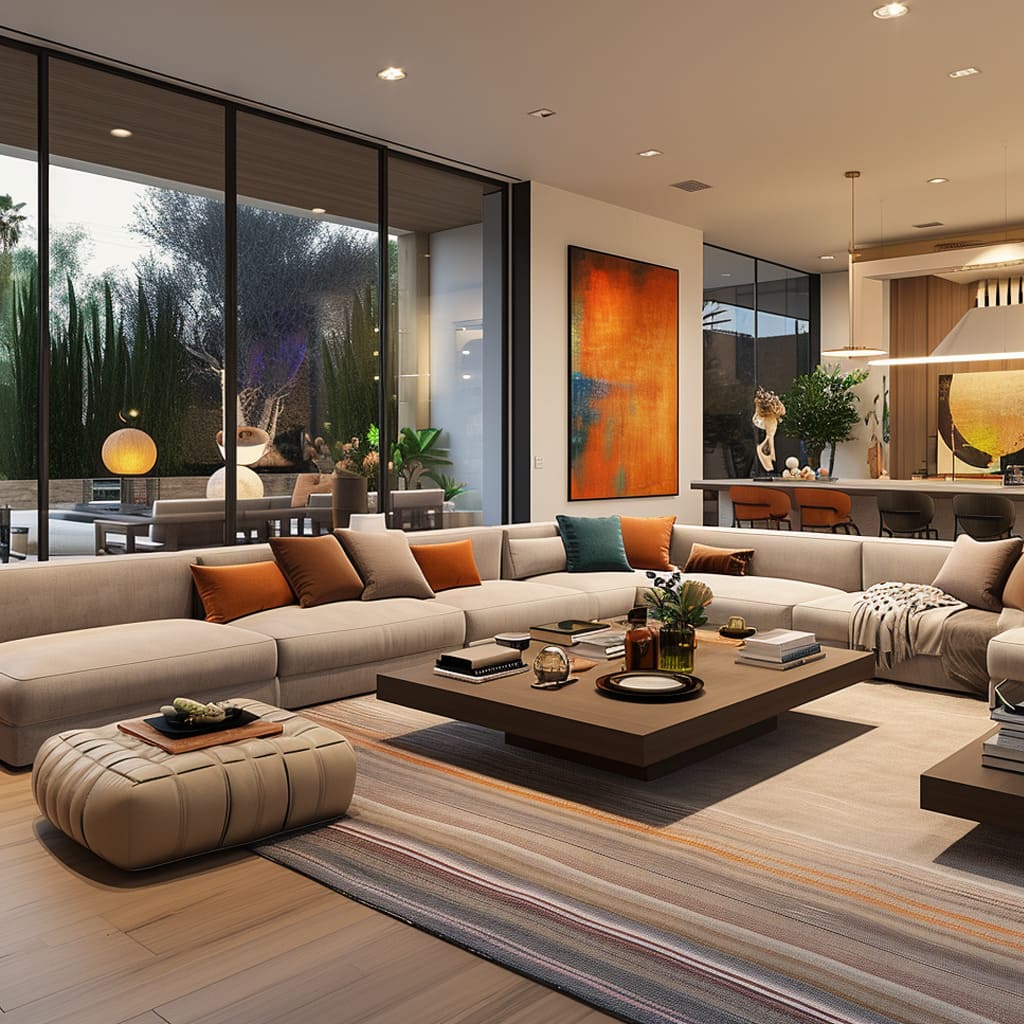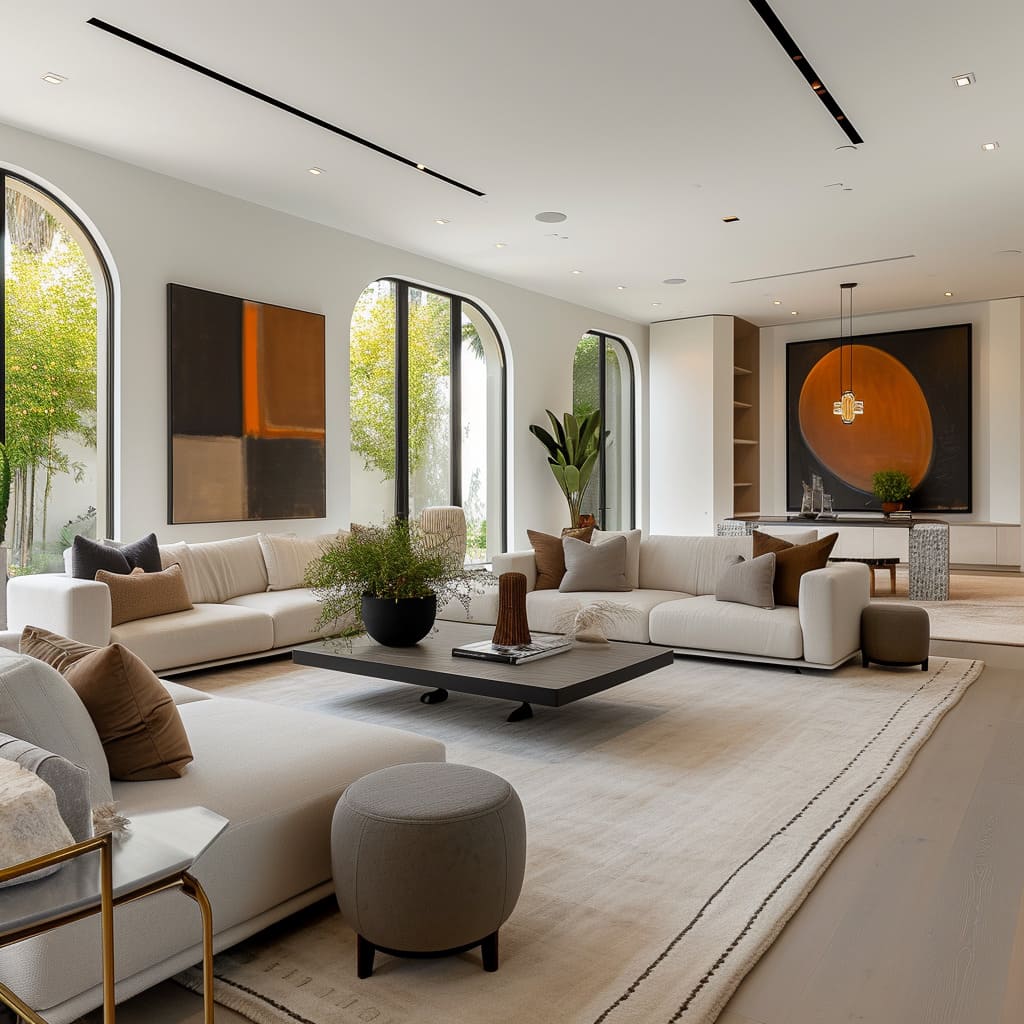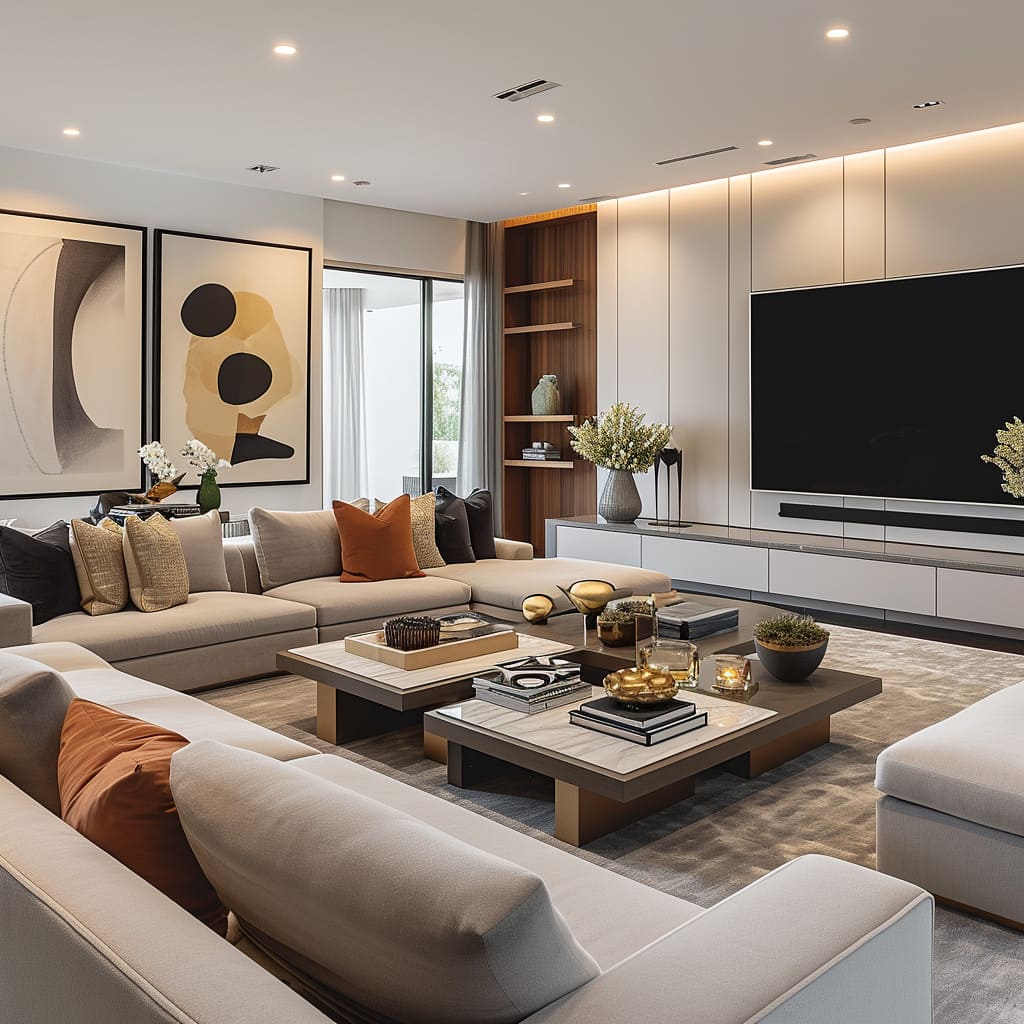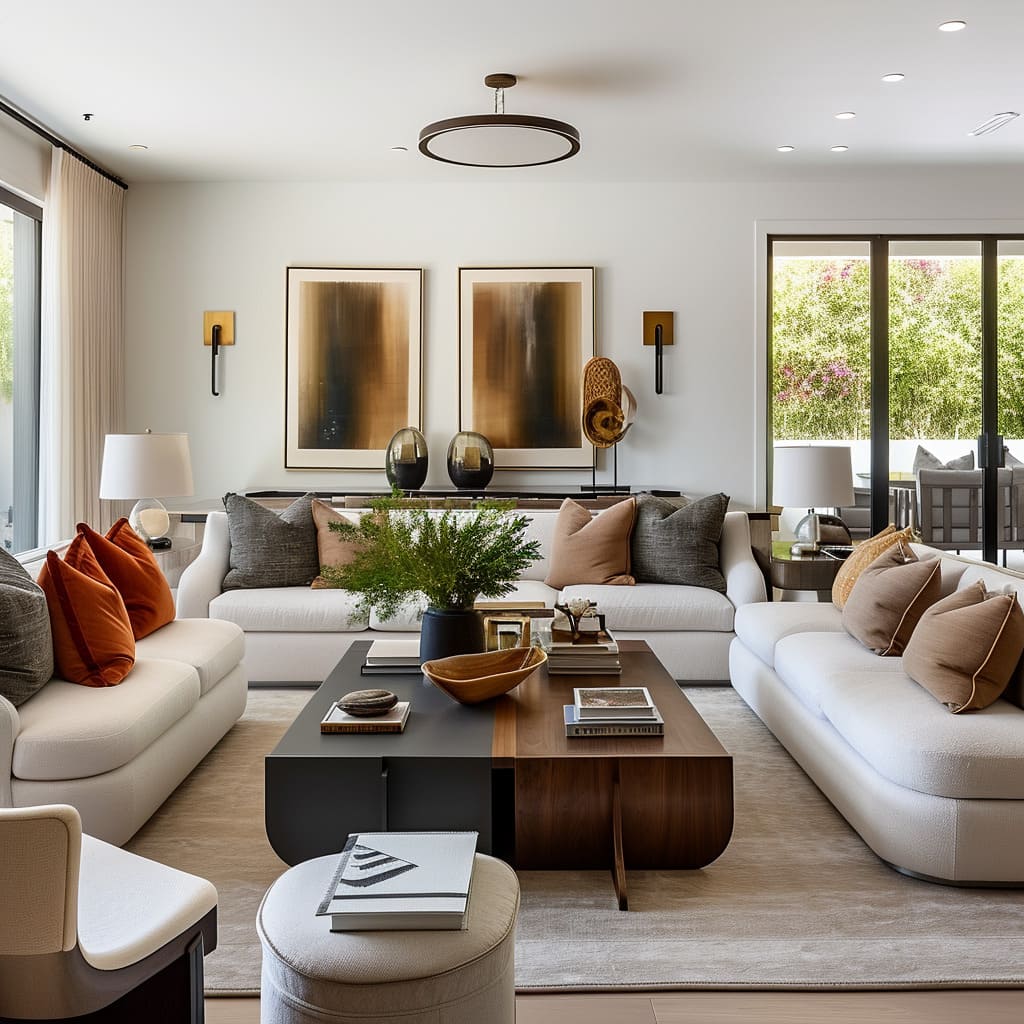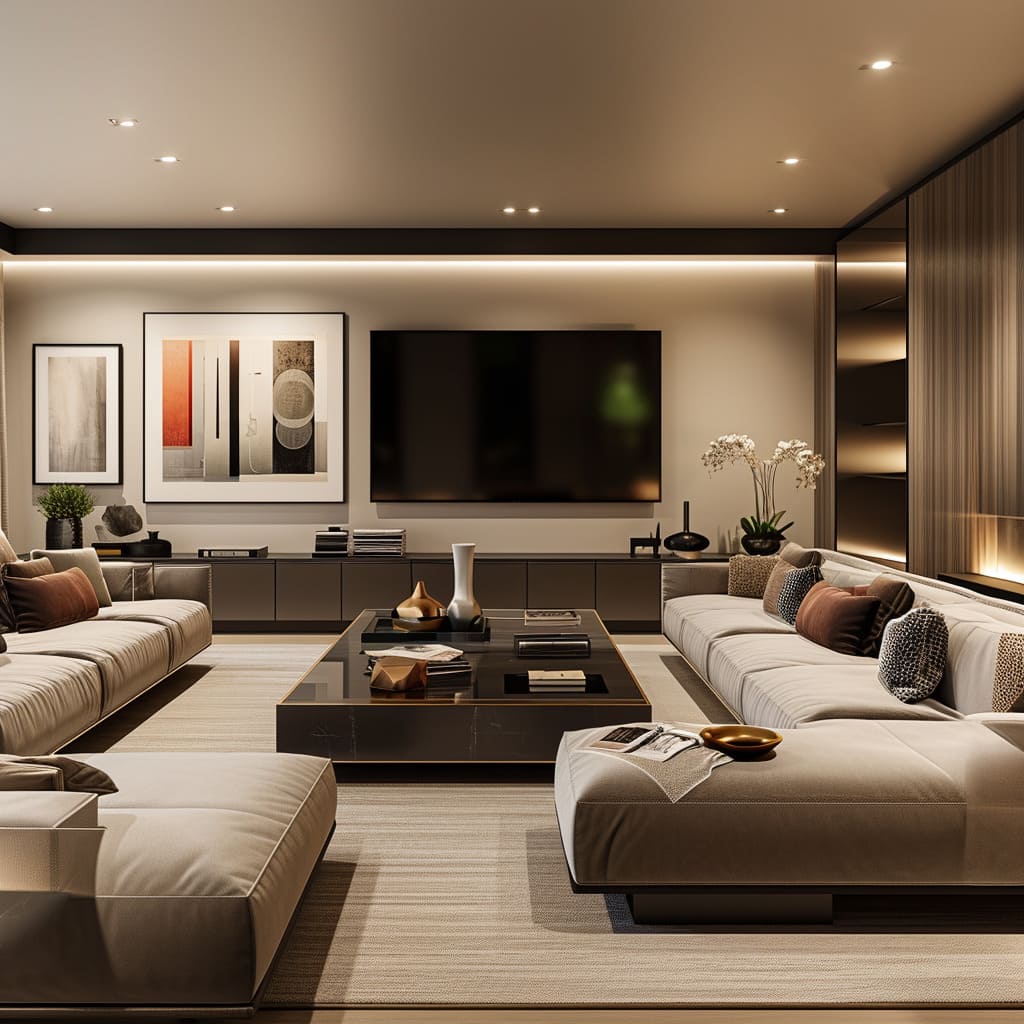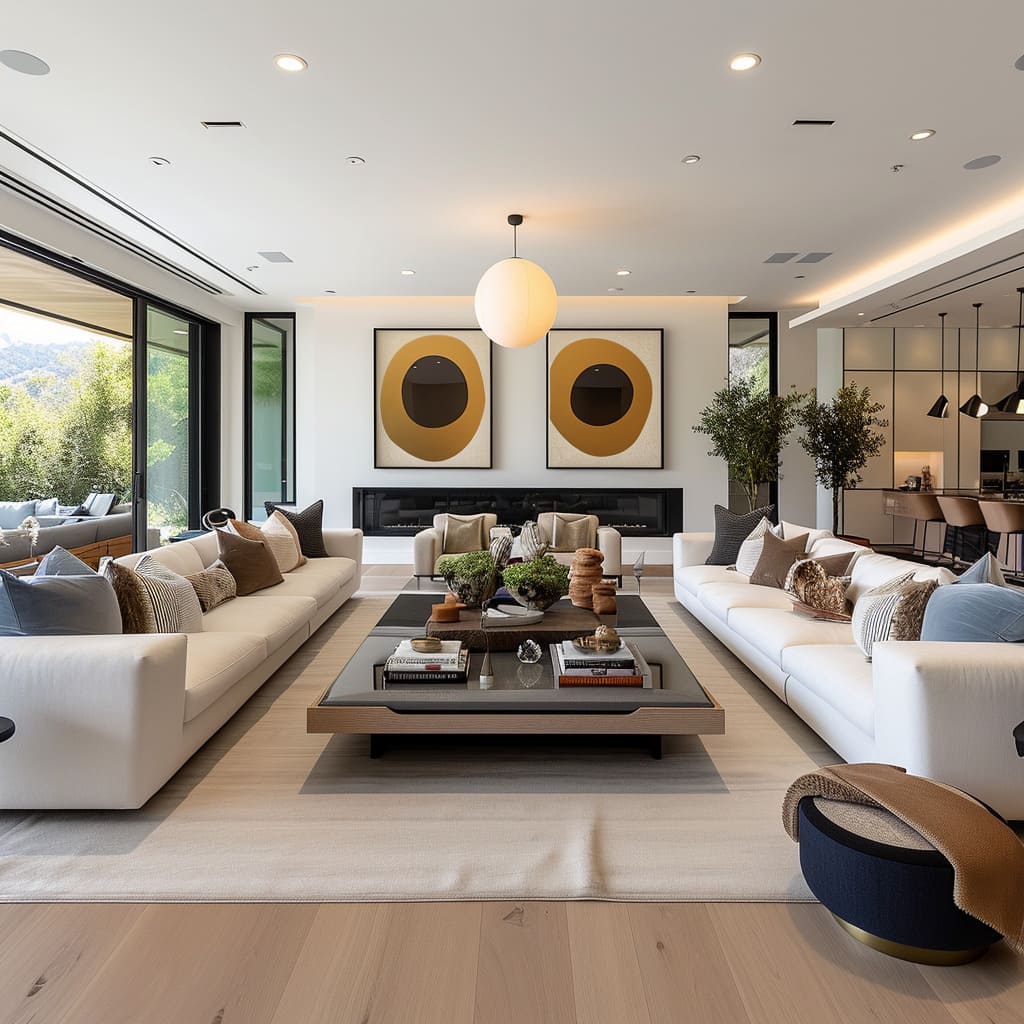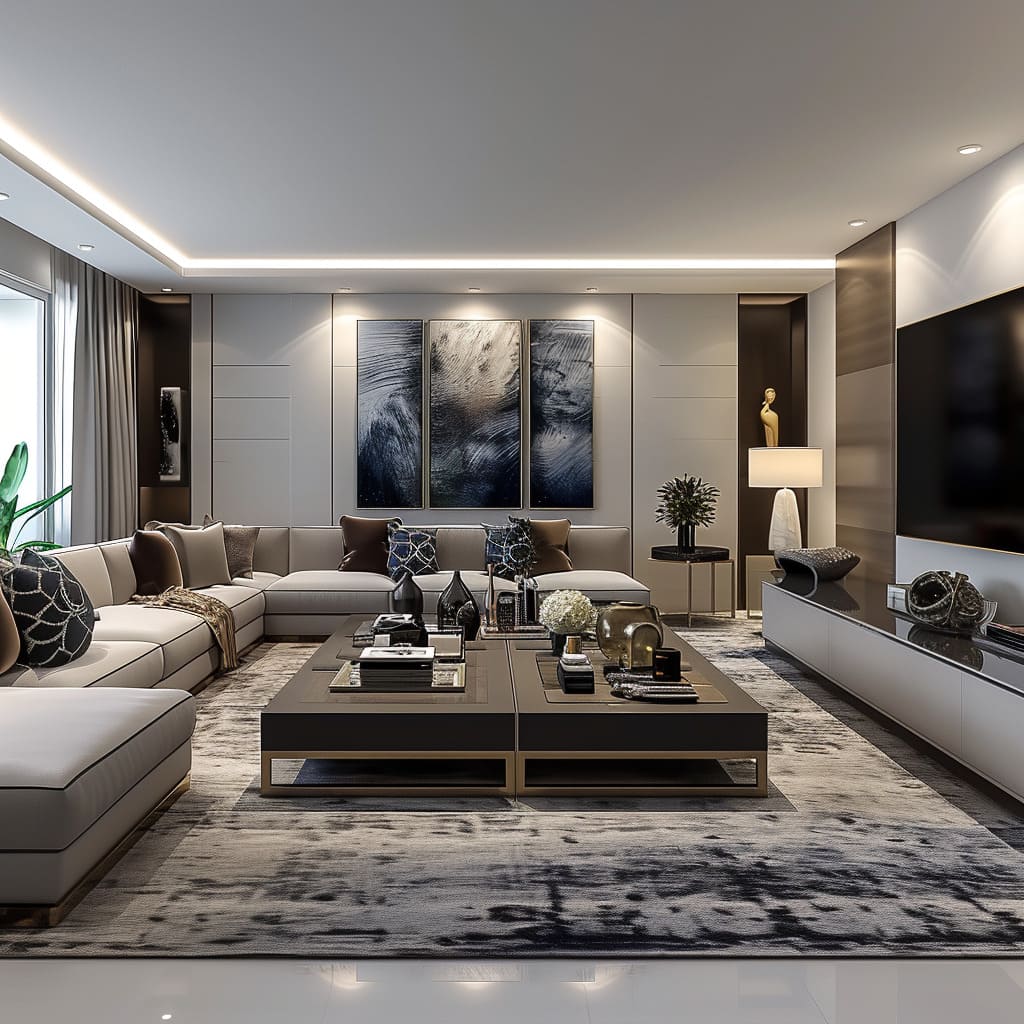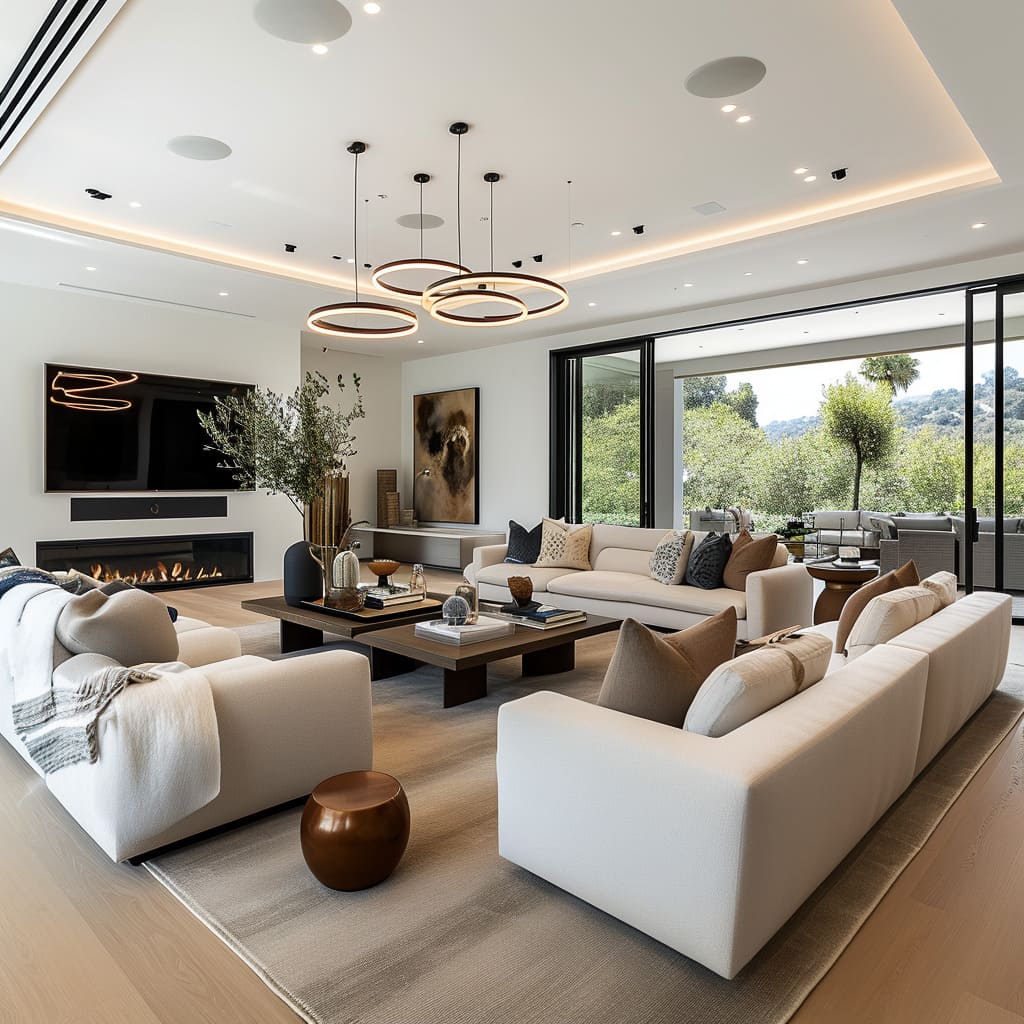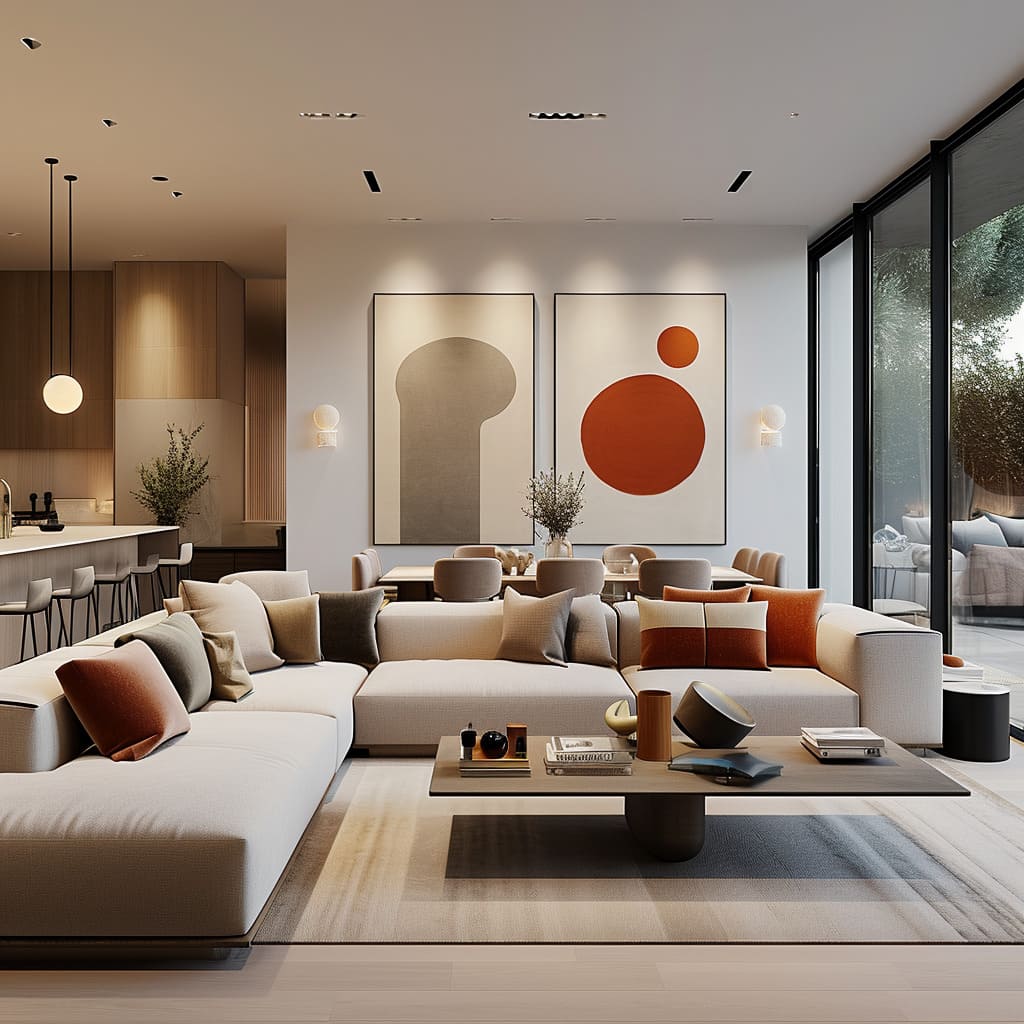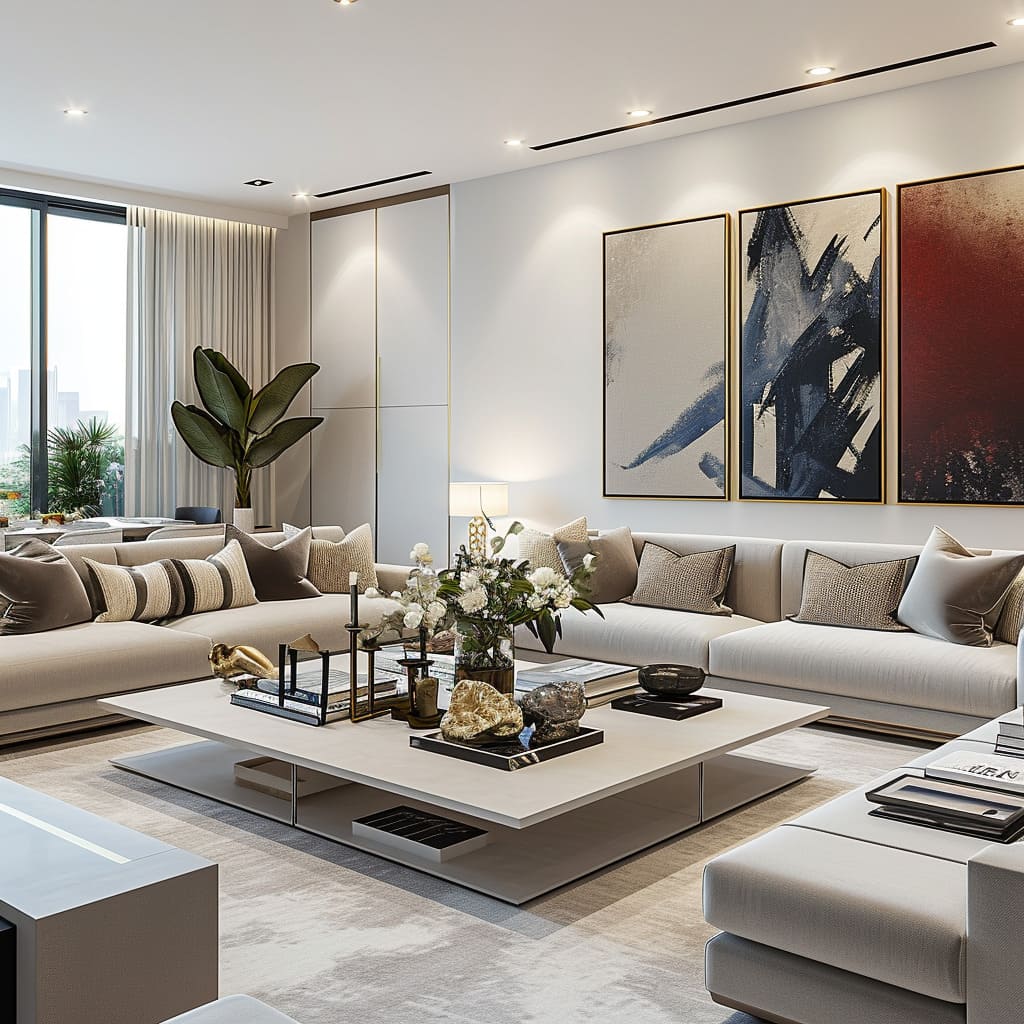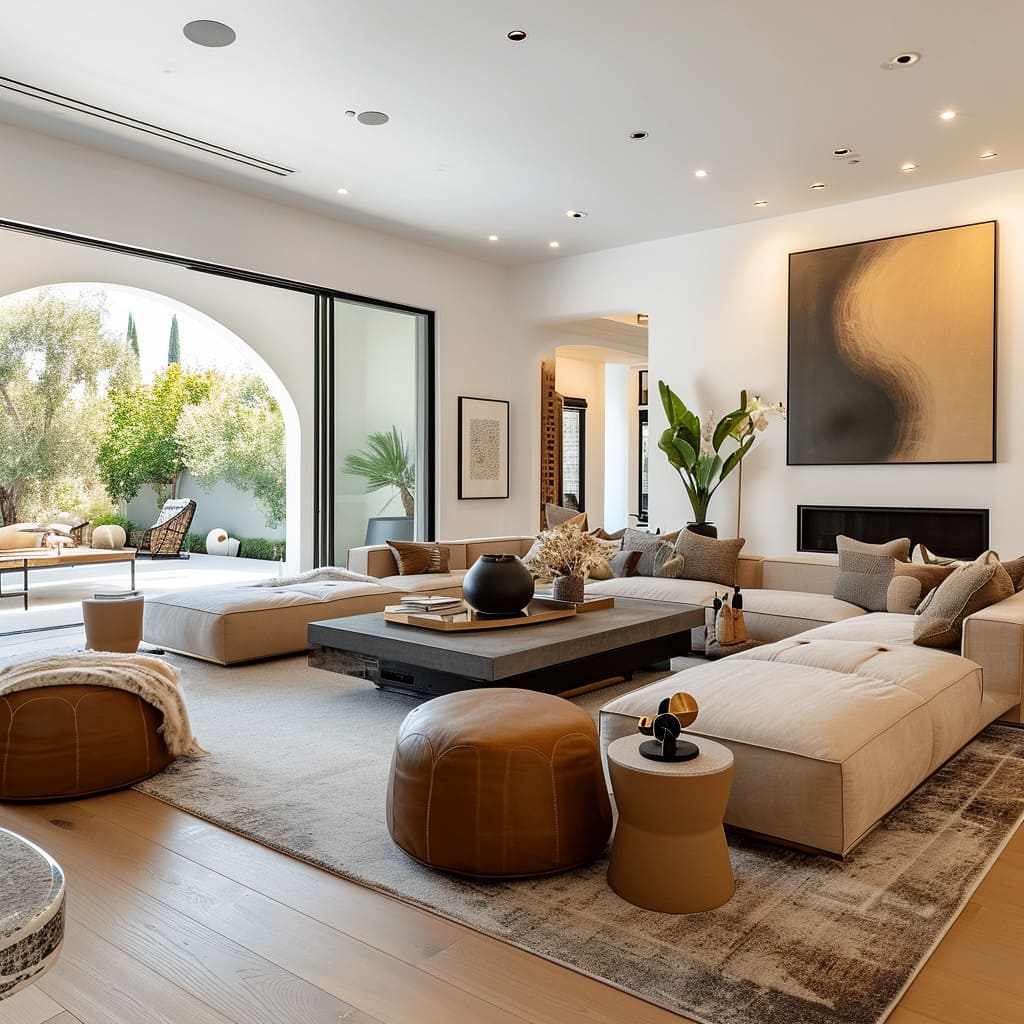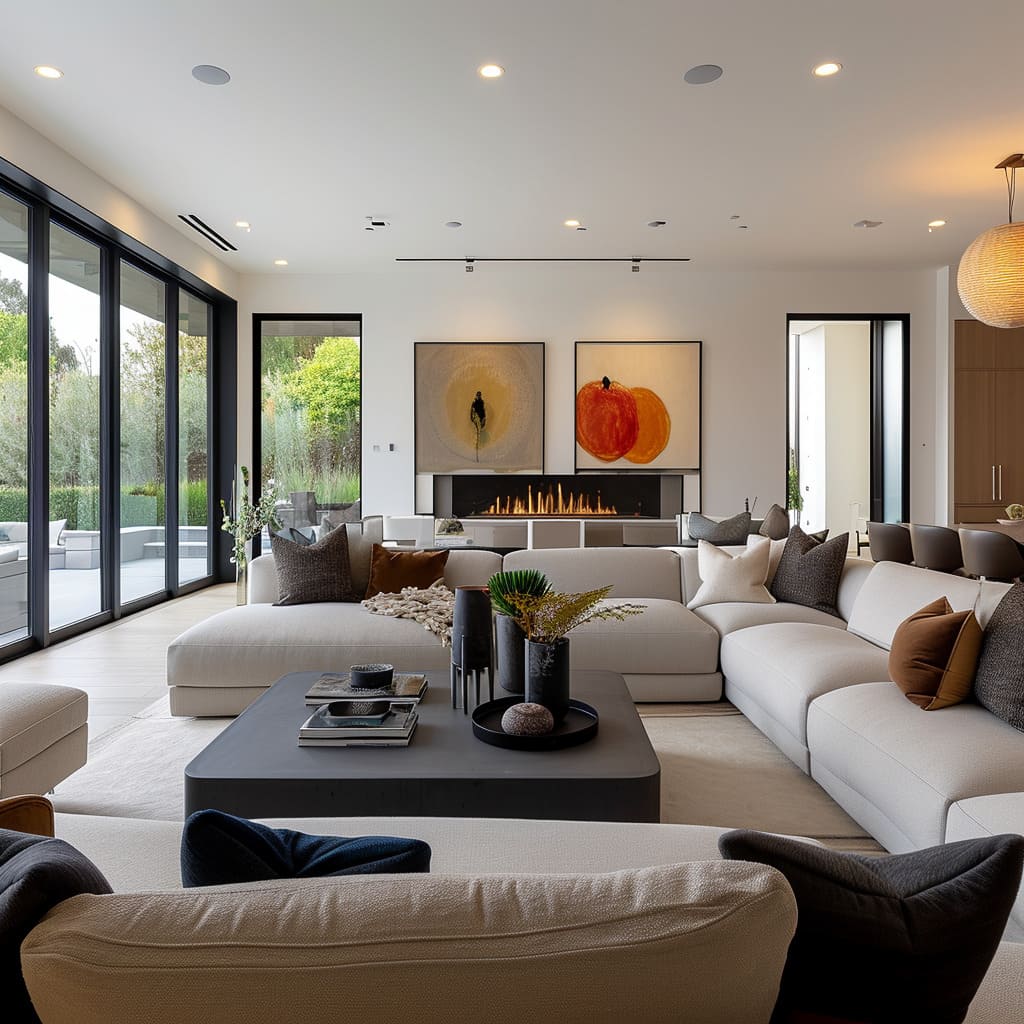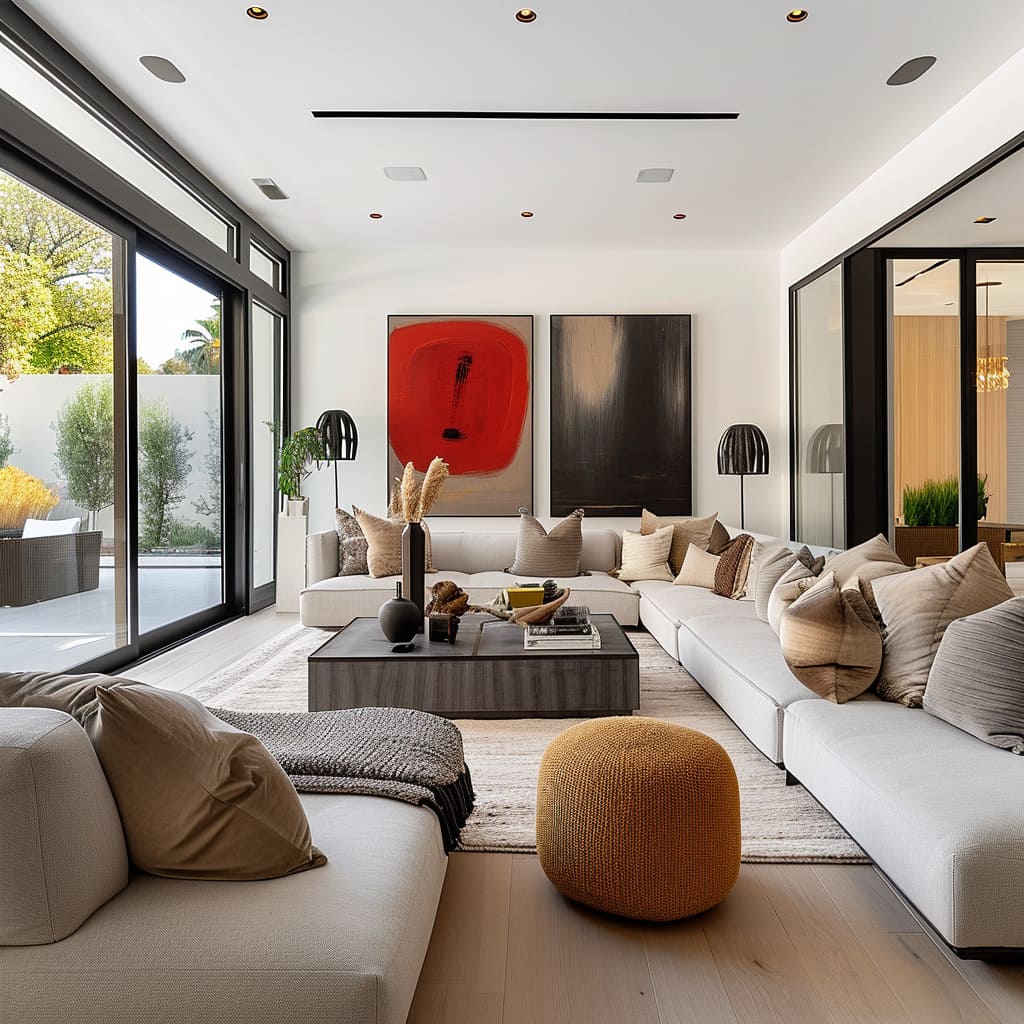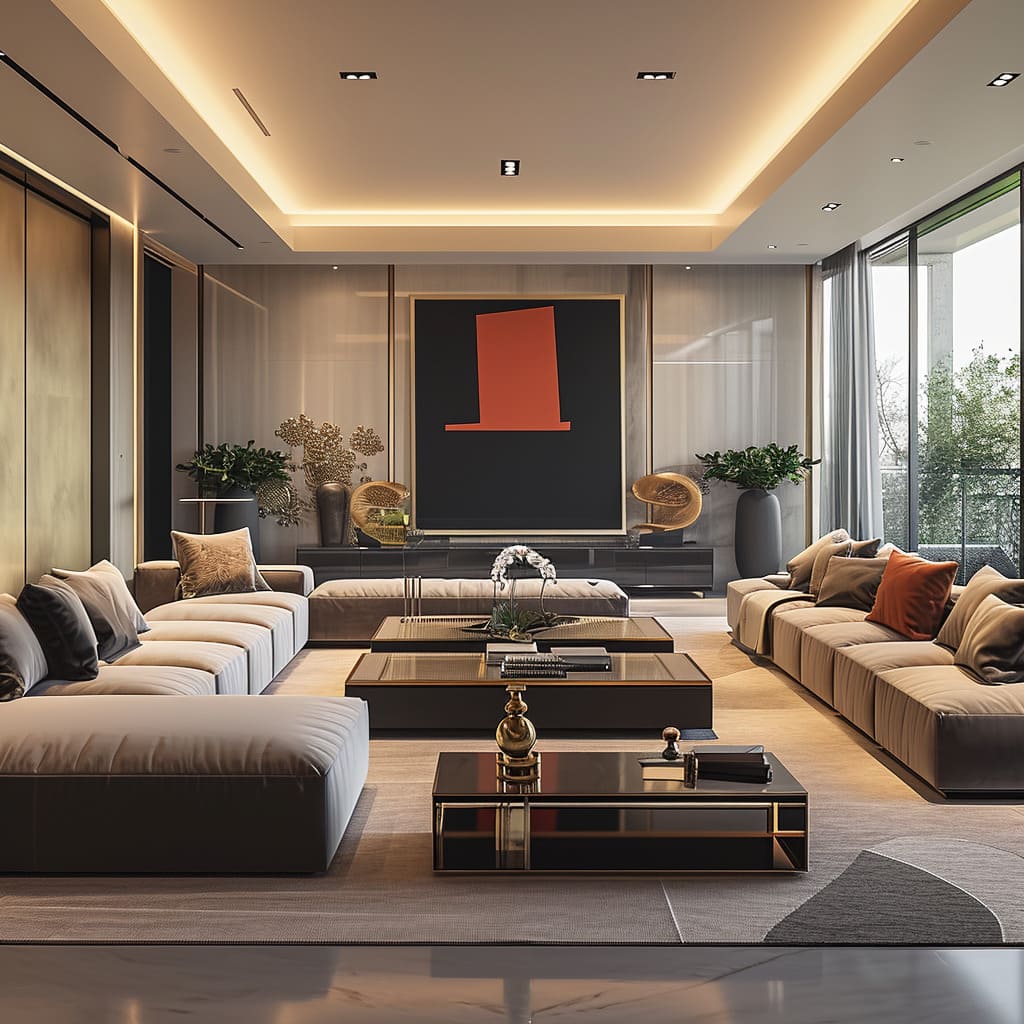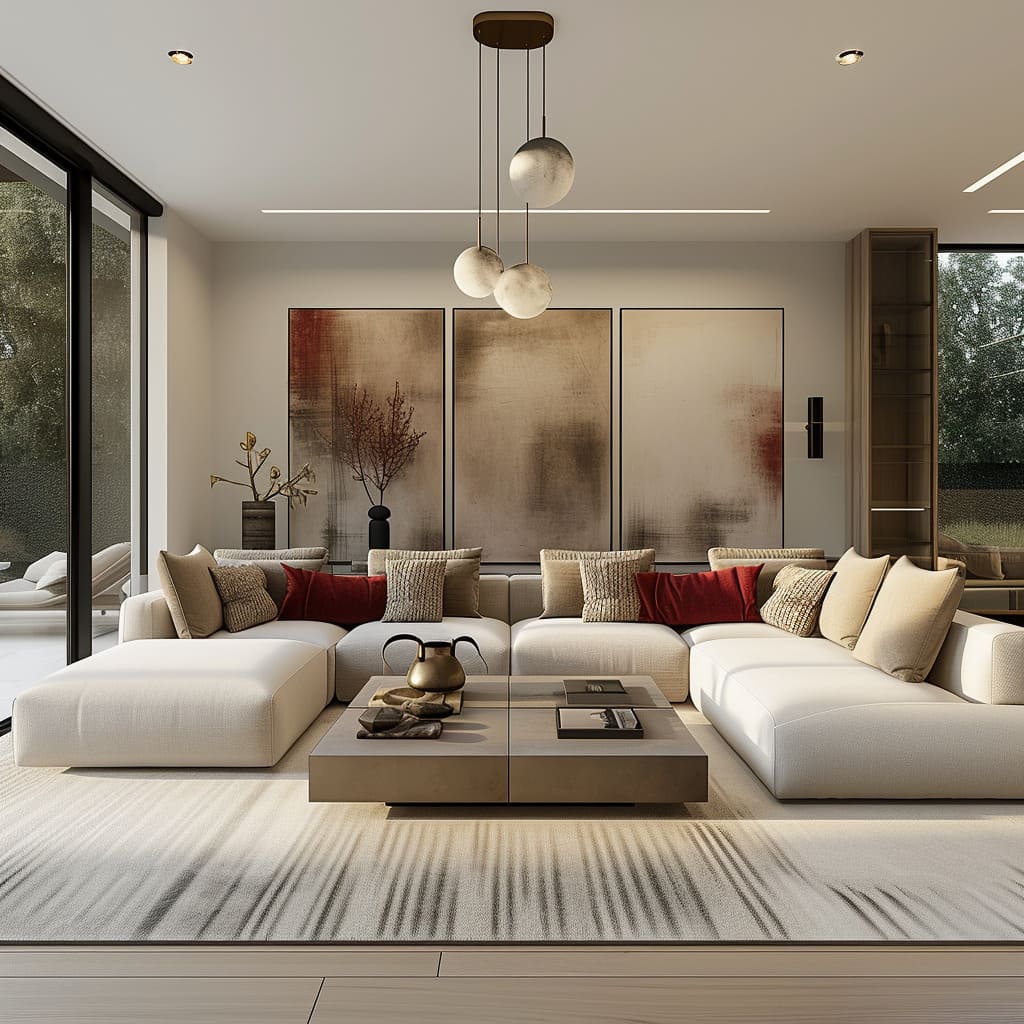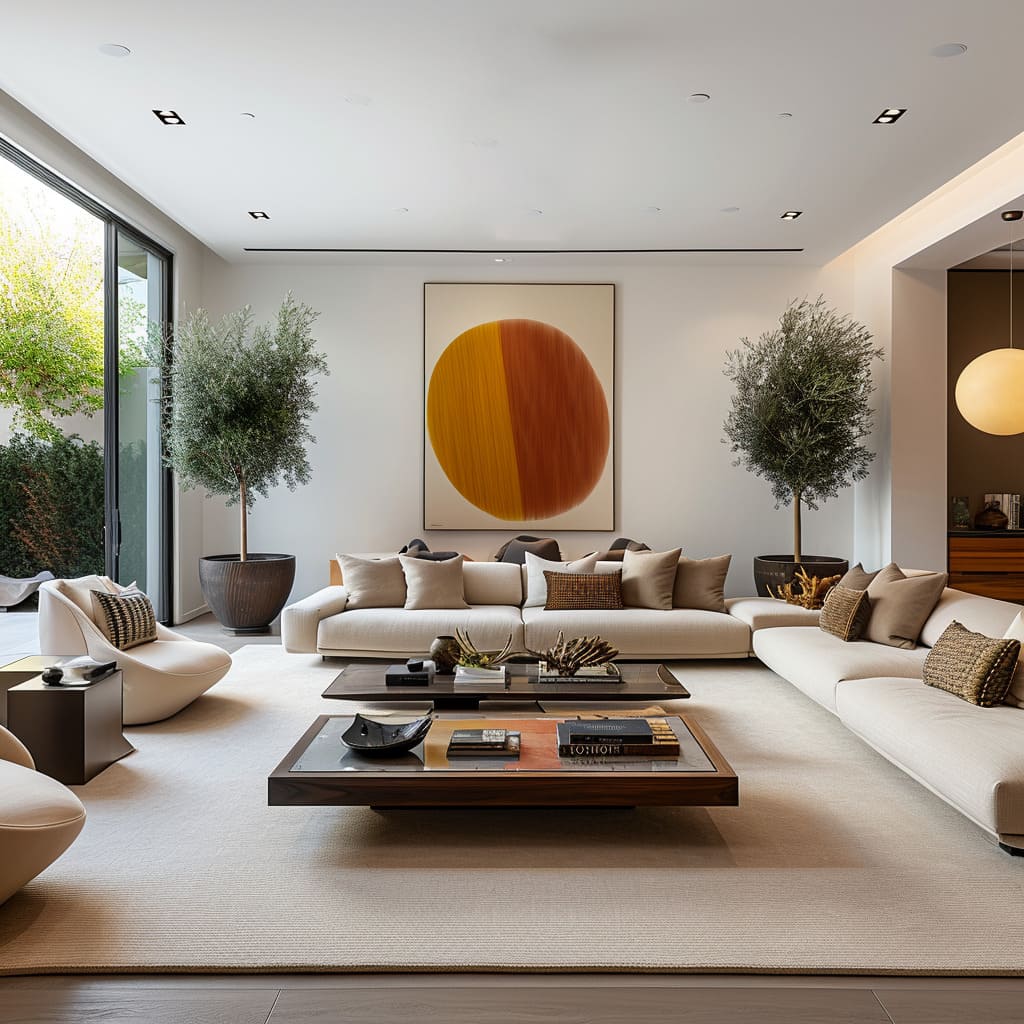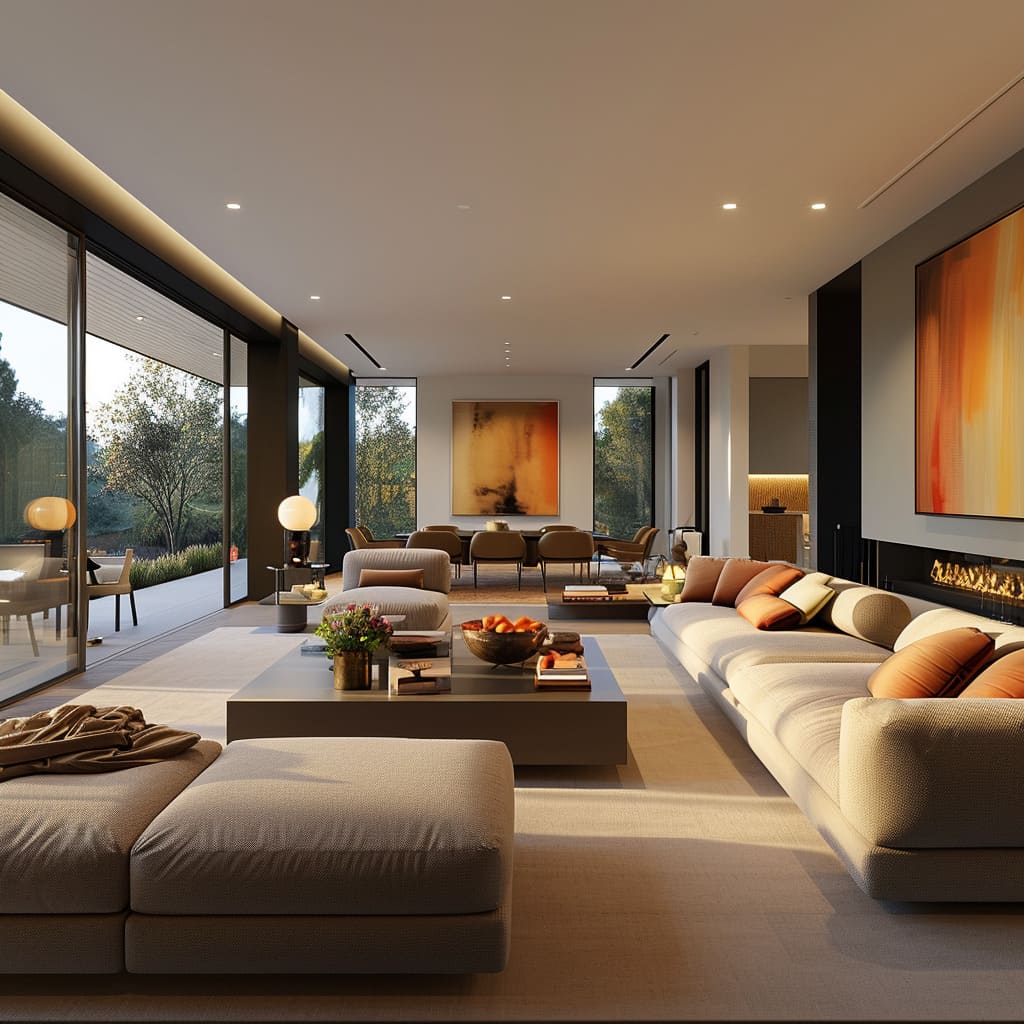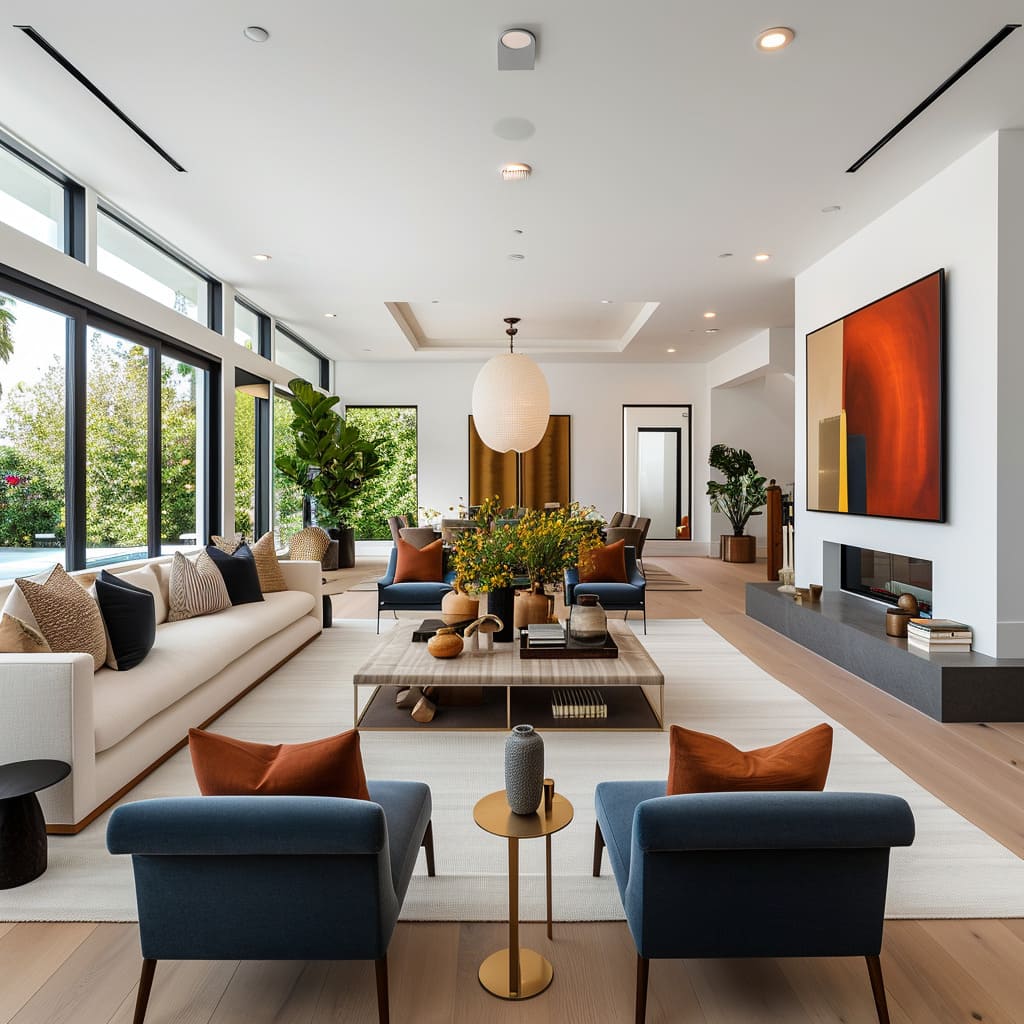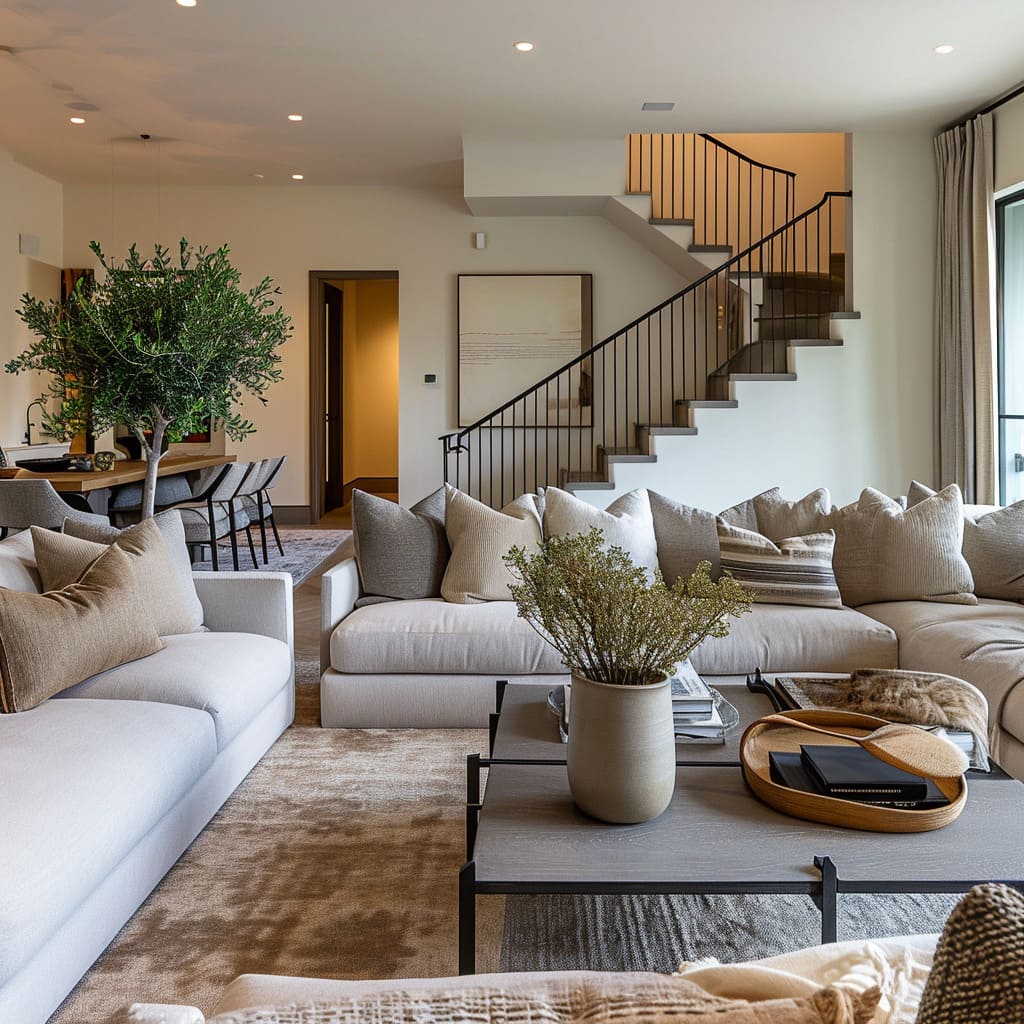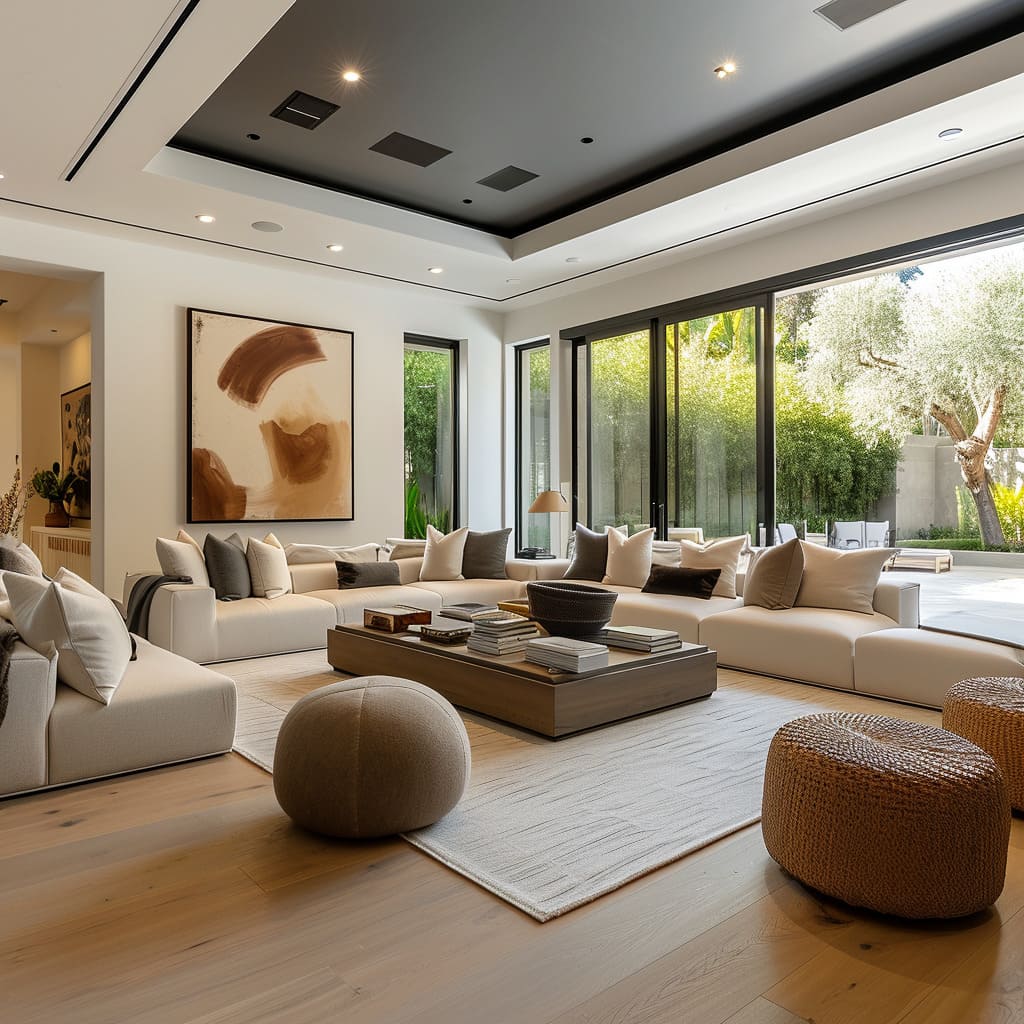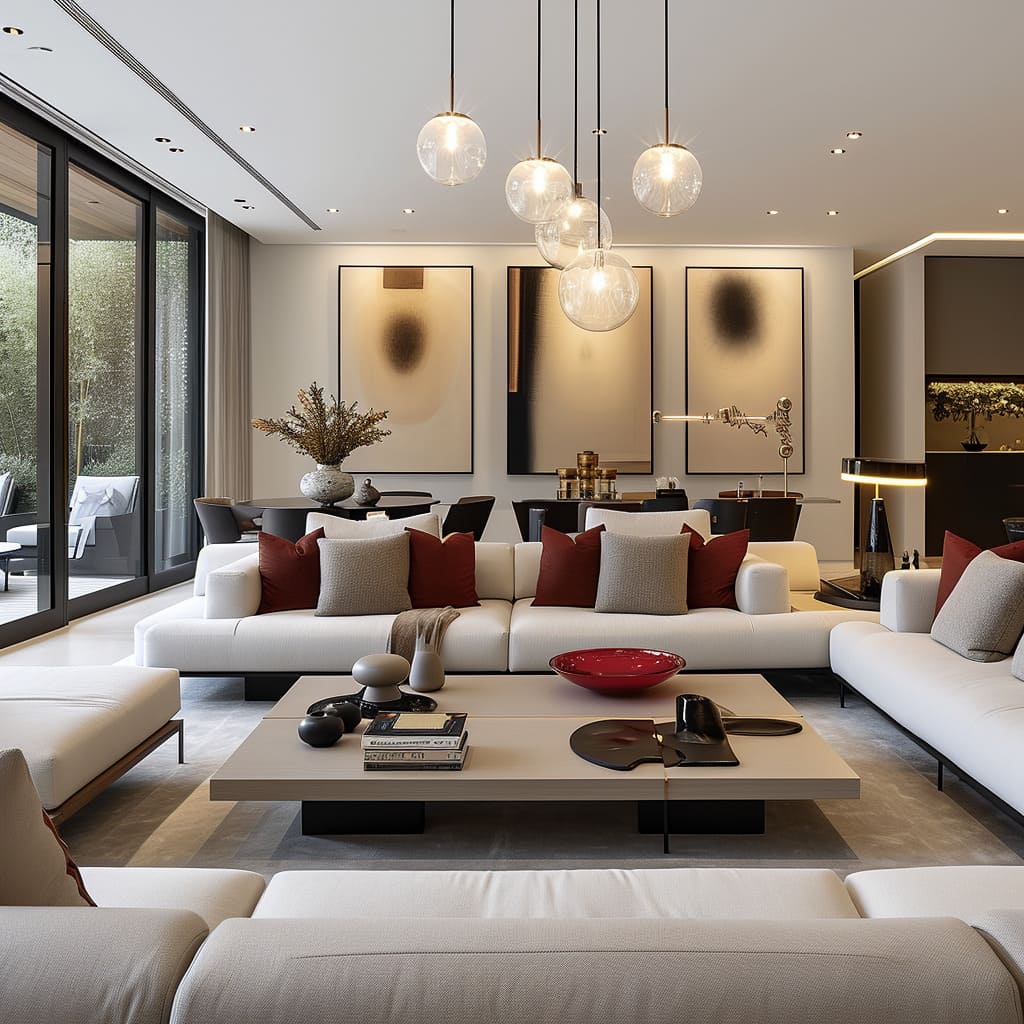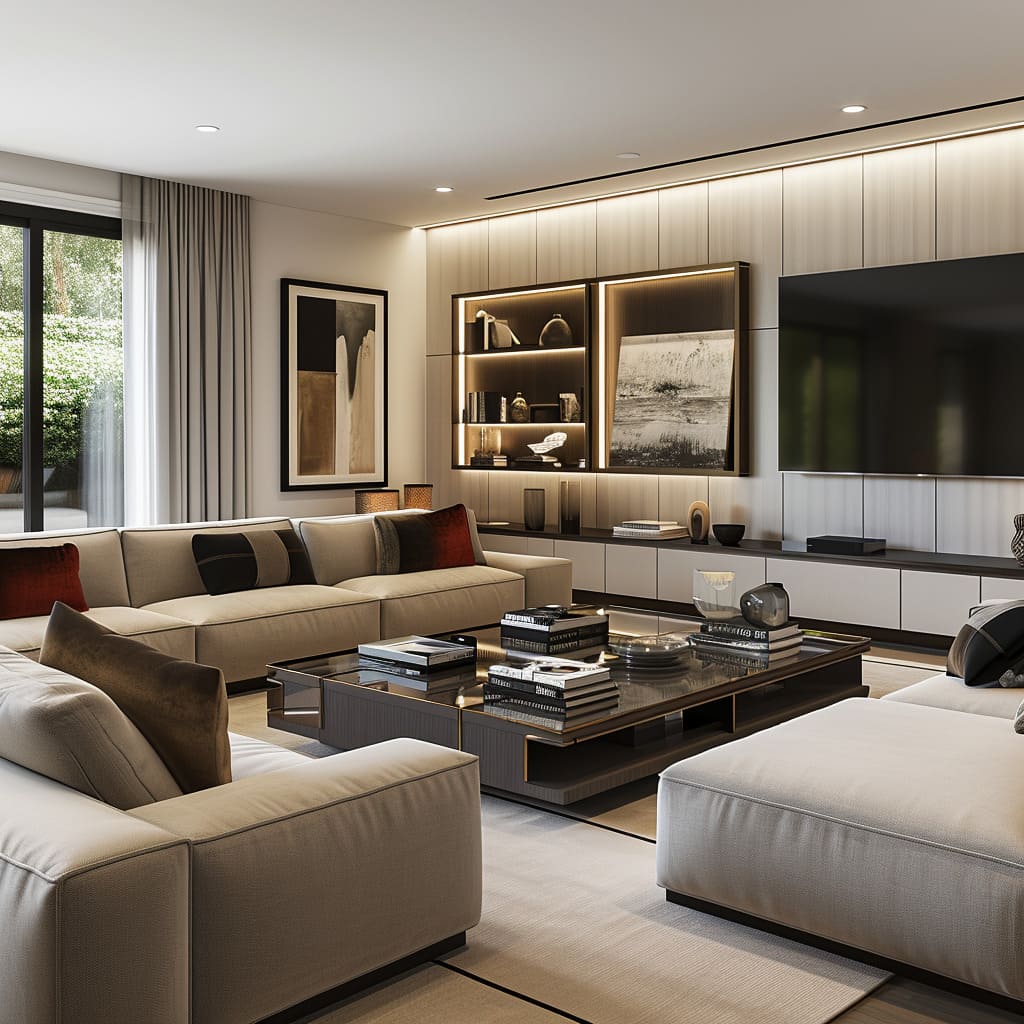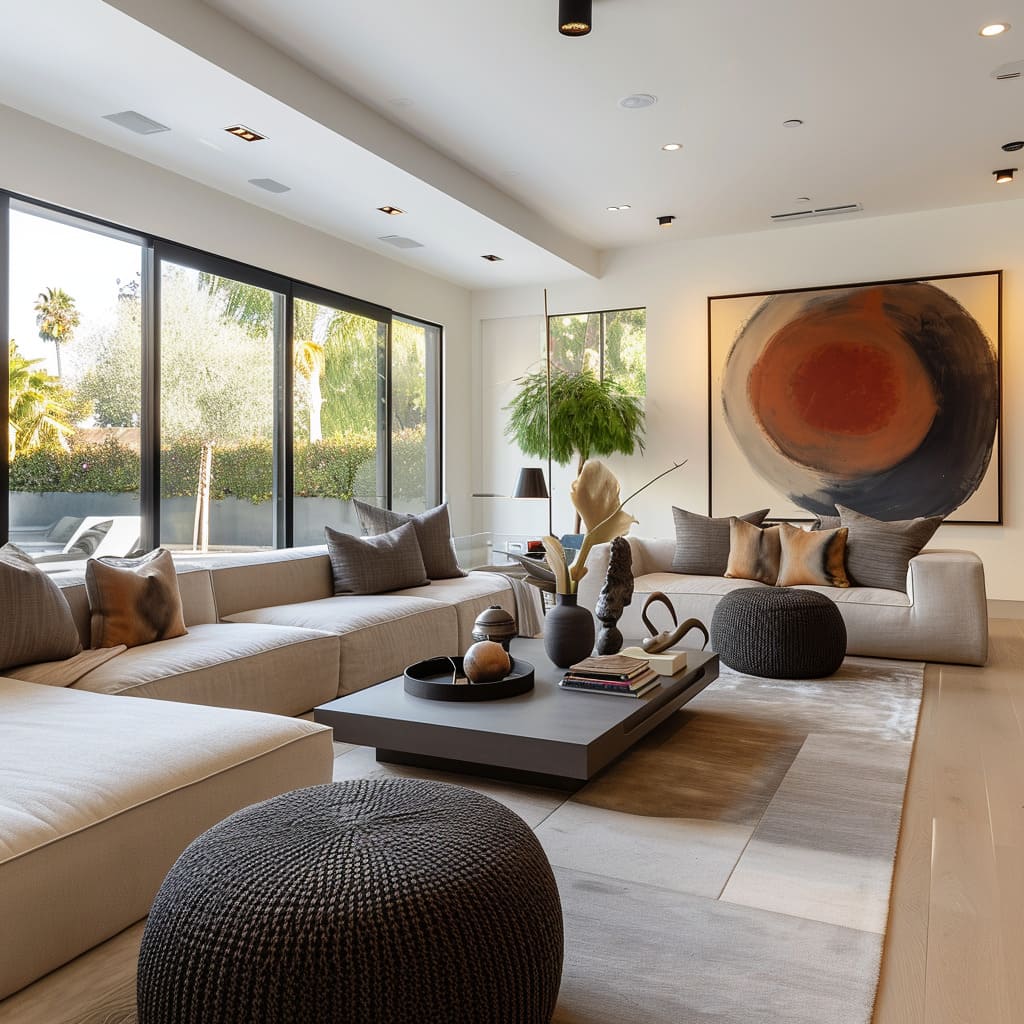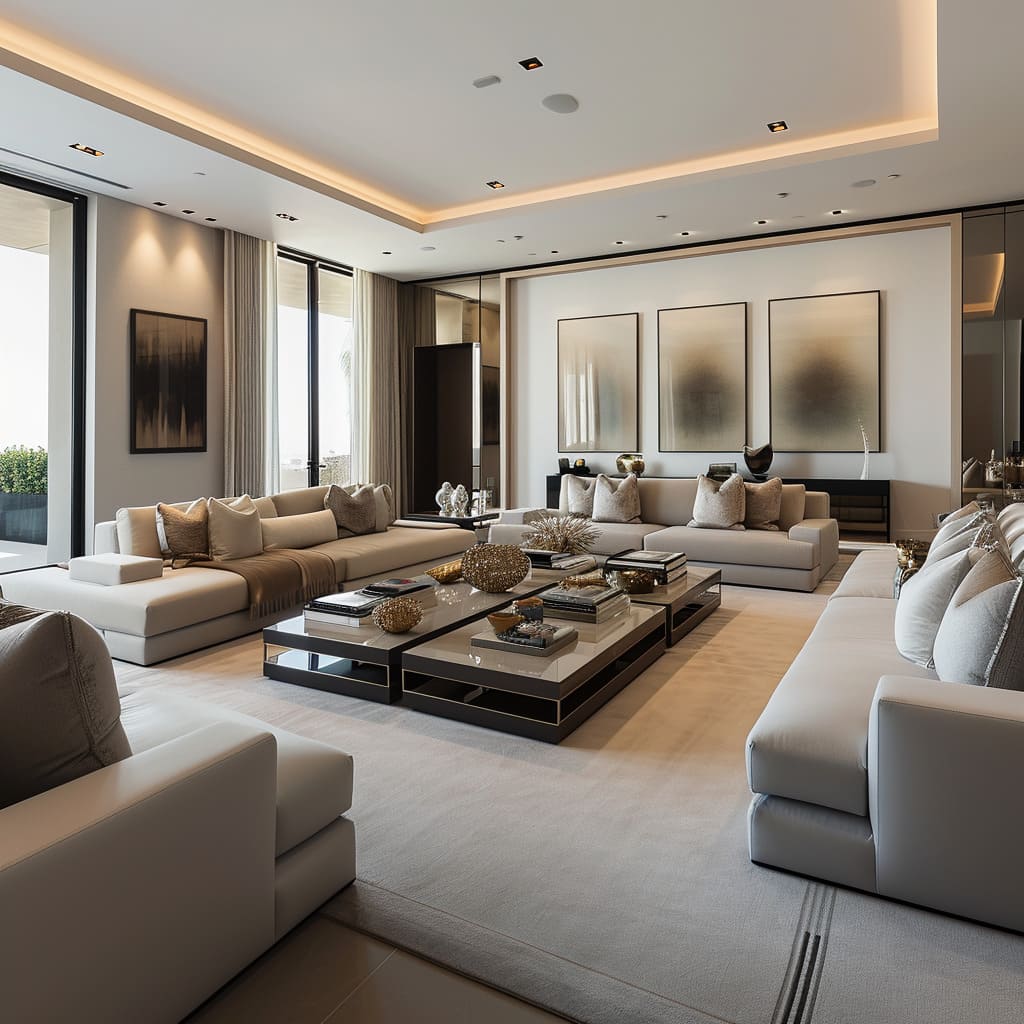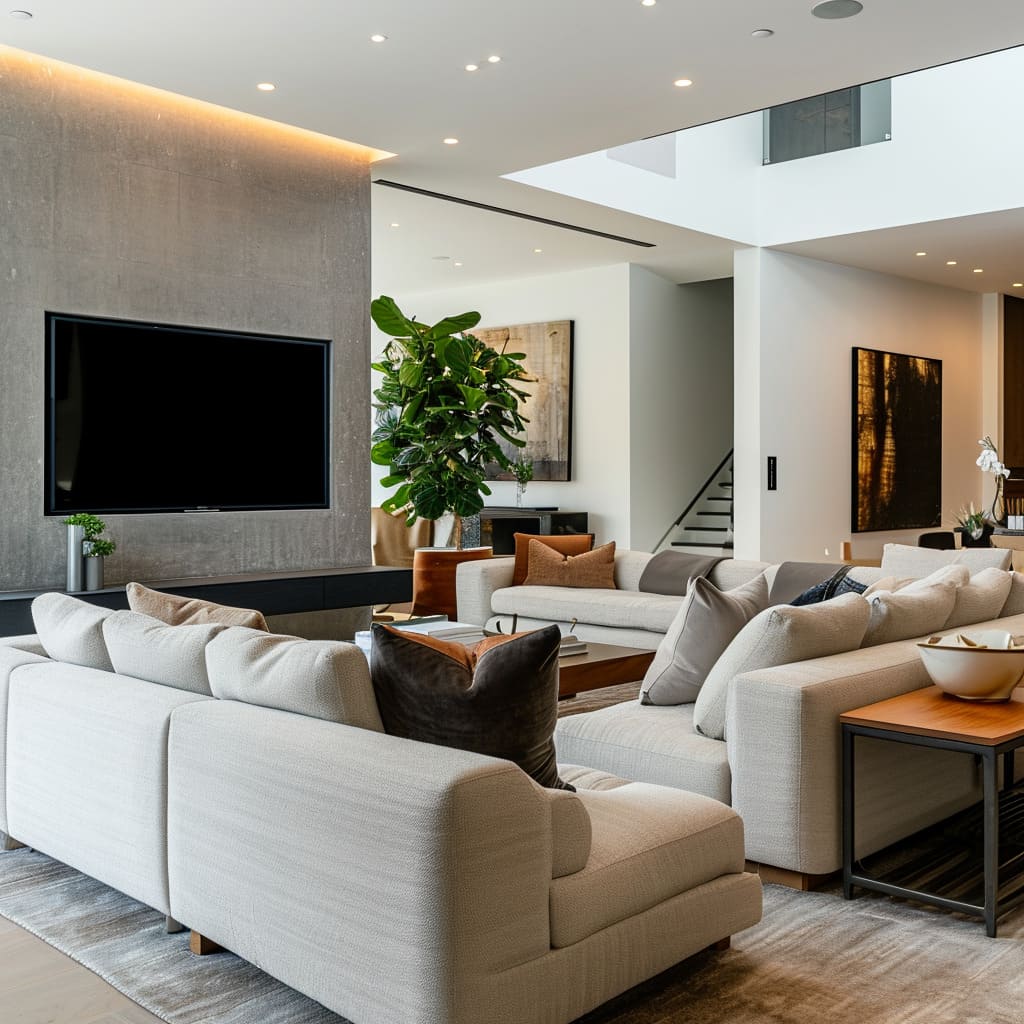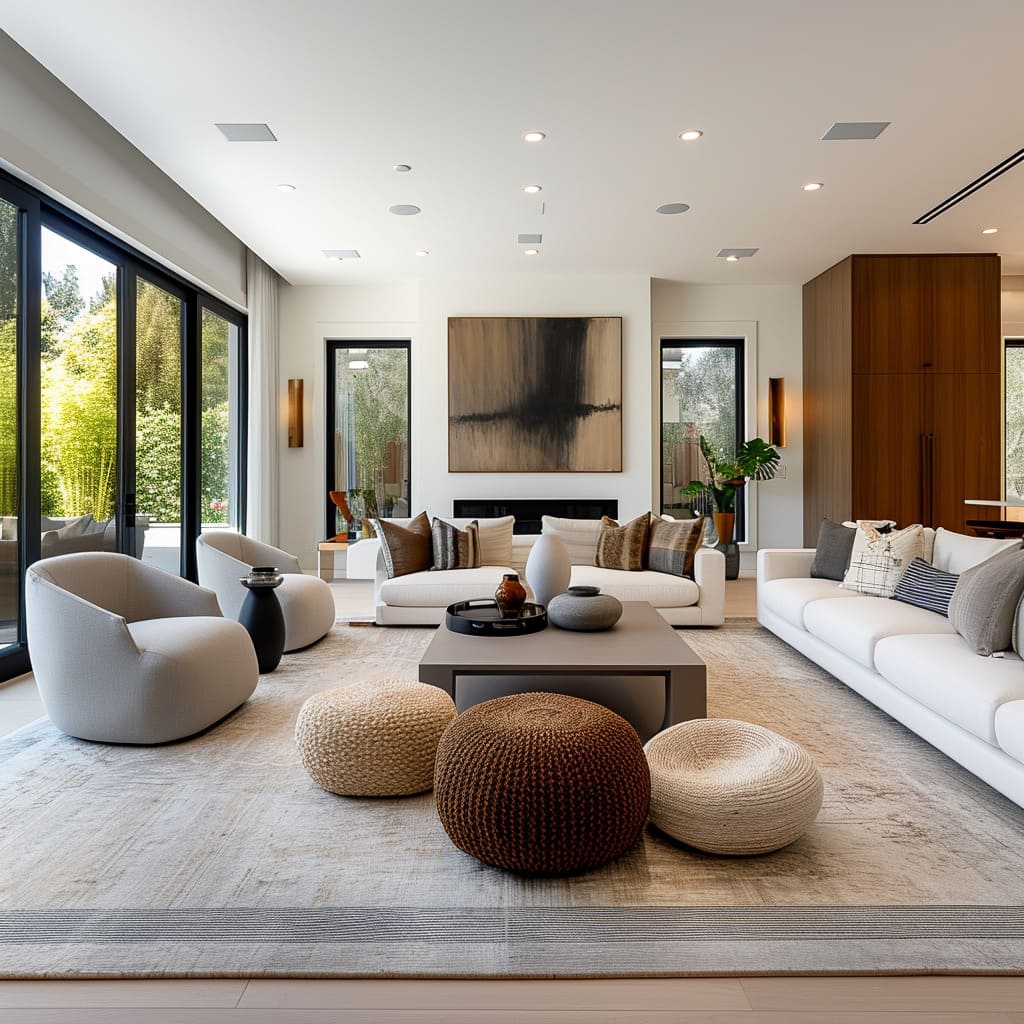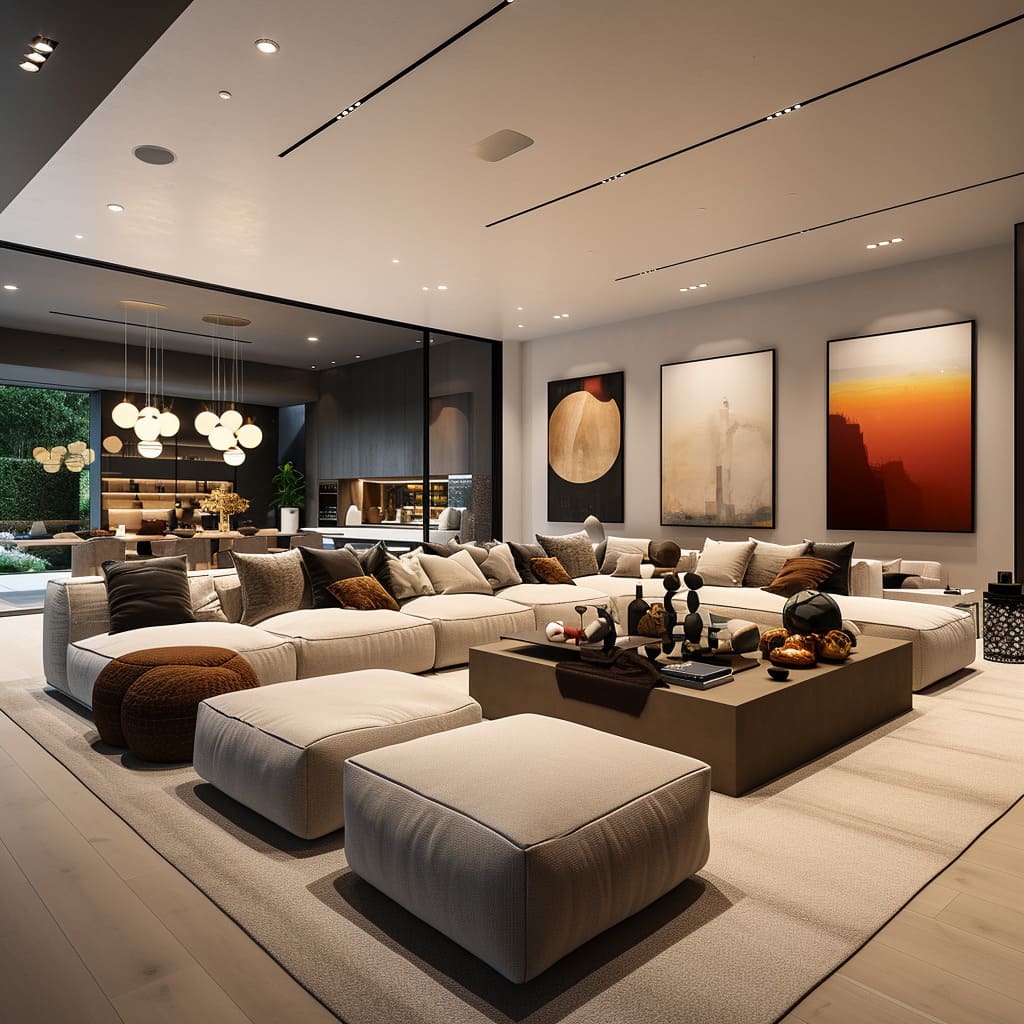Welcome to the intricate world of contemporary interior design, a realm where aesthetics meet pragmatism, where every element is an intentional stride towards a sleek and sophisticated habitat. This article delves into the essence of contemporary style, an approach to interior design that encapsulates the zeitgeist of the modern era with its clean lines, neutral color palettes, and an unwavering commitment to simplicity and functionality.
As we navigate through the nuances of contemporary design, we explore not just a look, but a reflection of a lifestyle that prizes clutter-free living spaces, celebrates natural light, and cherishes open areas that breathe freedom and fluidity. This design philosophy doesn’t just create rooms; it curates experiences, molding the ambiance of a space to suit the dynamic rhythms of daily life.
Contemporary design, often confused with modern design, is not anchored to a specific time period but is ever-evolving, taking cues from the present and looking forward to the future. It is characterized by its adaptability, its ability to morph with the latest trends while maintaining a timeless charm that transcends the ebb and flow of design fads.
The subtle sophistication of the contemporary design palette serves as a backdrop to life’s daily dramas, its neutral hues inviting inhabitants to imprint their personalities through art, texture, and light. Furniture in a contemporary setting isn’t just about providing a place to sit; it’s about crafting an unspoken dialogue between form and function, where each piece is chosen with intention and foresight.
In this article, we’ll dissect the anatomy of contemporary design, examining how each feature from color to space configuration contributes to the overall tableau. We’ll discuss how the interplay of various textures adds depth to a seemingly austere space, how lighting design doesn’t just illuminate but also elevates, and how the careful selection of materials speaks volumes about sustainability and style.
Let us go through the sleek and refined spaces that embody contemporary design, understanding the deliberate choices that turn a house into a haven of minimalism and tranquility.
Color Palette
Contemporary spaces typically utilize a neutral color scheme. The rooms shown utilize shades of white, beige, and grey as their base, with occasional pops of color through decorative pillows, artwork, and accent furniture.
This creates a chic and modern look that remains warm and inviting.
In addition to the foundational neutral tones, contemporary design often incorporates metallic accents like chrome, steel, or nickel, adding a touch of glamour and sophistication. This metallic sheen contrasts beautifully with the matte surfaces of other furnishings, contributing to a layered visual experience.
Furthermore, the use of color blocking with bold and vivid hues can be seen in select wall art or accent pieces. This strategic use of color not only adds visual interest but also helps in defining different zones within an open-plan space, giving each area its own identity within the cohesive whole.
The subtlety of the neutral base also allows for the interplay of light and shadow, which becomes an integral part of the design narrative. As daylight shifts, it highlights different aspects of the room, changing the mood and atmosphere throughout the day.
This dynamic quality ensures that the space is ever-evolving, never static, and always engaging with the inhabitants and the environment outside.
Furniture
The furniture in these rooms is characterized by clean lines and shapes, often with a minimalist aesthetic. Sofas and chairs with slim profiles and raised legs contribute to a sense of lightness and space.
Notable are the modular sofas that can be rearranged for functionality.
This minimalist approach to furniture design is not merely about aesthetics but also about function and comfort. Pieces are often ergonomic, offering support and comfort without excessive ornamentation.
In a contemporary living room, a sectional might not only serve as seating but also as a divider, subtly demarcating living from dining areas in an open floor plan. Storage solutions are frequently built into furniture designs, with clean facades that conceal the utility within.
This hidden functionality keeps the environment serene and uncluttered.
Sustainability is also a growing concern in contemporary furniture design, with an emphasis on using responsibly sourced materials and production methods that reduce environmental impact. Designers are increasingly turning to reclaimed woods, recycled metals, and non-toxic finishes, aligning the contemporary aesthetic with an eco-conscious mindset.
This blend of form, function, and sustainability defines the new wave of contemporary furniture design.
Lighting
Recessed or track lighting is prominent in contemporary design, providing a sleek and unobtrusive source of illumination. The rooms also feature large windows that invite natural light to flood the space, enhancing the airy feel.
The thoughtful placement of lighting fixtures can also define and alter the perceived dimensions of a space. Directional lighting, for example, can create intimate areas within larger rooms or highlight architectural features.
Ambient lighting can soften the room’s edges at night, transforming the mood from bright and functional during the day to soft and relaxed in the evening. The selection of lighting fixtures themselves can act as modern sculptures, with designs that challenge traditional forms and serve as statement pieces.
Smart lighting technology has become an integral part of contemporary interiors as well. Programmable systems allow for the adjustment of intensity and color temperature, enhancing the adaptability of the space to different activities or times of day.
This technology not only provides convenience but also supports a sustainable lifestyle through energy efficiency.
Materials
There is a mix of natural and industrial materials. Wood flooring is a common element, adding warmth against the coolness of metal details in furniture legs and fixtures.
Glass is also widely used, particularly in large windows or as tabletops, contributing to the open, expansive feeling of the space.
The juxtaposition of different materials is a key feature in contemporary design. For instance, the warmth of natural wood is often paired with the coolness of polished stone or the industrial edge of concrete.
This contrast creates a tactile and visual depth that enriches the design narrative. In addition, materials such as leather and wool may be used in upholstery, offering durability and timeless appeal, while also providing comfort.
In the pursuit of minimalism, the finishes of these materials are often kept subtle and understated. Matte, honed finishes are preferred over glossy ones to maintain a serene and tactile environment.
The materials are chosen not only for their aesthetic quality but also for their longevity and ease of maintenance, ensuring the space remains timeless and practical.
Artwork and Accents
Contemporary design often features bold pieces of art as focal points. The artwork in these spaces is abstract, with vibrant colors or interesting textures that draw the eye without overwhelming the room.
The strategic placement of artwork and accents can guide the viewer’s gaze around the room, creating movement and flow. In contemporary design, art is not just decoration but a piece of the spatial design puzzle, carefully selected to resonate with the room’s geometry and color scheme.
Additionally, sculptures and artistic objects often serve a dual purpose, sometimes functioning as bookends, doorstops, or even unconventional plant holders.
With the trend toward mindfulness and well-being, artwork in contemporary interiors also tends to reflect a sense of tranquility and introspection. Imagery that invokes nature, abstract compositions that invite contemplation, and handcrafted items that connect with artisanal roots are all elements that contribute to a peaceful and thoughtful living space.
Texture
Even with a neutral color scheme, these designs play with texture to add depth and interest. Textured fabrics on pillows, rugs, and throws add layers of touchable appeal, while smooth surfaces like metal and glass provide a visual counterpoint.
The layering of textures is a strategic way to add warmth and comfort to the sleek lines of contemporary design. For example, a shaggy rug on a smooth, polished floor can create a haven of coziness in a minimalist setting.
Fabrics with a nubby weave or knitted throws add a handcrafted feel that brings a human touch to the modern environment.
Textures also play a critical role in sound absorption, an important consideration in contemporary spaces known for their open plans and hard surfaces. Soft furnishings, heavy drapes, and textured wall finishes can help to dampen sound, making the space not only visually pleasing but also acoustically comfortable.
Layout
The arrangement of furniture is focused on both aesthetics and functionality, fostering comfortable living as well as conversation. There’s an open space concept, with furniture strategically placed to create distinct areas within the same room.
The layout in a contemporary setting is often zoned with the use of area rugs, lighting, and furniture placement, allowing for multifunctional spaces that can adapt to various activities, from quiet reading to social gatherings. The concept of ‘negative space’—the area that is left empty—is just as important in contemporary design.
It gives the room a sense of balance and allows the eye to rest, providing a break from the visual stimuli.
Connectivity with the outdoors is another aspect of layout design in contemporary interiors. Openings are carefully planned to frame views and invite the outside in, creating a seamless transition between interior and exterior spaces.
This connection with nature not only enhances the aesthetic but also promotes a healthier living environment.
Decorative Elements
Contemporary spaces often include unique, sculptural elements that serve as conversation pieces. These might include oversized vases, bowls, and other tabletop decor that combine form and function.
In a contemporary space, less is often more when it comes to decorative elements. The idea is to select items that have a purpose or tell a story.
This could mean choosing objects that have a sentimental value, are from travels, or are works of art in their own right. Each piece is selected with intention, ensuring the space is personalized and reflects the owner’s tastes and experiences.
This careful curation of decorative elements also means that there is a focus on quality over quantity. Instead of filling shelves with knick-knacks, a contemporary home might feature a single, exquisite piece that draws the eye and starts conversations.
This minimalist approach to decoration emphasizes the importance of each individual piece and its role within the space.
Lines and Space
Clear lines and ample space are the hallmarks of contemporary design. There’s a strong emphasis on form and structure, and the spaces between furniture are just as important as the pieces themselves, allowing the room to feel uncluttered.
The clean lines in contemporary design serve to create a sense of order and tranquility. They guide the eye in a fluid movement around the room, enhancing the feeling of space and openness.
The strategic use of lines can also influence the perception of the room’s size and shape, making it appear larger or cozier as desired.
The appreciation of space in contemporary design extends to the architectural elements as well. High ceilings, open floor plans, and the minimal use of interior walls create a sense of freedom and expansiveness.
These architectural choices are deliberate, designed to remove barriers to light and movement, creating an environment that feels open and boundless.
In conclusion, contemporary interior design is a symphony of balance, where each element plays a crucial role in creating a harmonious and functional living space. It is a design philosophy that embraces the beauty of simplicity, the warmth of neutral palettes, the clarity of line, and the tactile richness of varied textures.
This approach to design is not static but evolves with the times, integrating new materials, technologies, and ideologies as they emerge.
The strength of contemporary design lies in its flexibility and focus on personalization, allowing spaces to be molded to the lifestyles and tastes of their inhabitants. It is both forward-thinking and reflective, offering a canvas that can adapt to changes in trends without losing its timeless appeal.
Whether through the subtle interplay of light and shadow, the strategic placement of art, or the intelligent use of space, contemporary interiors offer a serene retreat from the outside world.
Above all, contemporary design celebrates the art of living well by creating spaces that are both beautiful and functional. It is a testament to the idea that the best designs are those that combine form with function, beauty with utility, and art with everyday living.
As we move forward, contemporary design will undoubtedly continue to influence how we shape our environments, making it a pivotal and ever-relevant field in the world of design.

